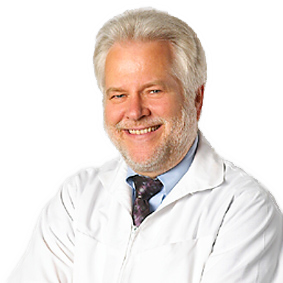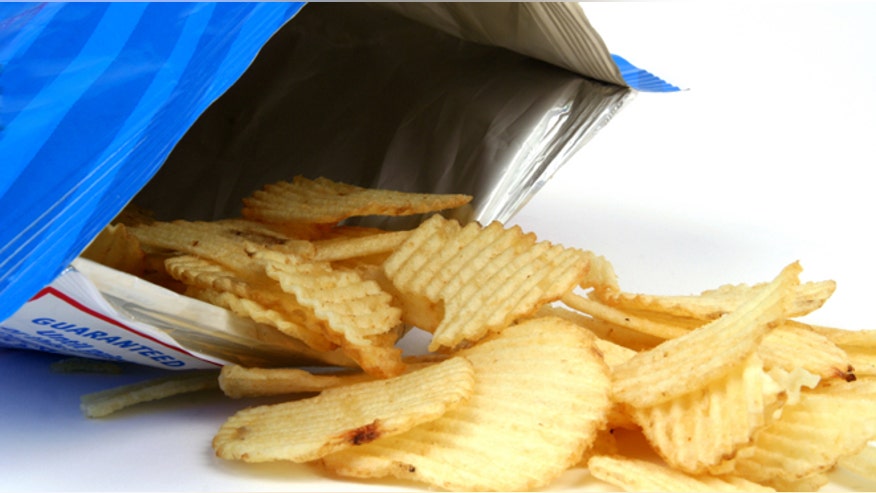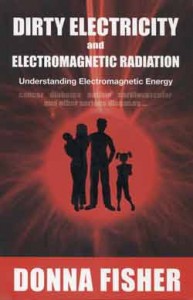
CLICK PIC
Dirty air, dirty water, pollution and toxins in our food and environment. We live in the toxic world. But have you heard of dirty electricity. We are surrounded today by electronics and in fact a lot of us carry electronics on our body most of the time. Cell phones, tablet computers and music devices, we live in electromagnetic soup. And for some of us that can mean a significant impact on our health. If you are a electro-hypersensitive person you could be suffering from a host of symptoms and diseases because of that.
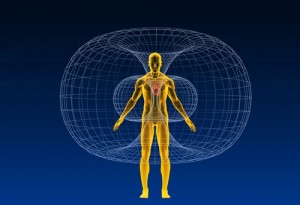
CLICK PIC
Just like a person with environmental allergies you could have significant problems with an elevated pollen count, people with electromagnetic sensitivities are surrounded by dirty electricity. If you don't have allergies and a high pollen count might not affect you, the same goes with dirty electricity though I believe were all affected to some degree because we have electromagnetic systems in our body. Our brain is electromagnetic marvel and to think all the electromagnetic fields around us don't have any effect is probably naïve.

CLICK PIC
It's kind of like smoking, not all people who smoke get lung cancer. In a 2006 European study, the risk of developing lung cancer was: 0.2% for men who never smoked (0.4% for women) 5.5% for male former smokers (2.6% in women) 15.9% for current male smokers (9.5% for women) 24.4% for male “heavy smokers” defined as smoking more than 5 cigarettes per day (18.5% for women). Some might get chronic bronchitis, heart disease or increased pain levels.
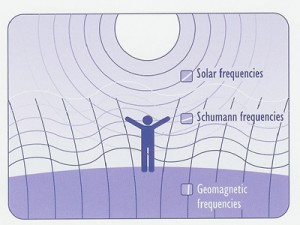
CLICK PIC
The same goes with dirty electricity here is a list of some of the symptoms that you can have if you electromagnetic sensitive: Neurological: headaches, dizziness, nausea, difficulty concentrating, memory loss, irritability, depression, anxiety, insomnia, fatigue, weakness, tremors, muscle spasms, numbness, tingling, altered reflexes, muscle and joint pain, leg/foot pain, "Flu-like" symptoms, fever. More severe reactions can include seizures, paralysis, psychosis and stroke. Cardiac: palpitations, arrhythmias, pain or pressure in the chest, low or high blood pressure, slow or fast heart rate, shortness of breath. Respiratory: sinusitis, bronchitis, pneumonia, asthma. Dermatological: skin rash, itching, burning, facial flushing. Ophthalmologic: pain or burning in the eyes, pressure in/behind the eyes, deteriorating vision, floaters, cataracts. Others: digestive problems; abdominal pain; enlarged thyroid, testicular/ovarian pain; dryness of lips, tongue, mouth, eyes; great thirst; dehydration; nosebleeds; internal bleeding; altered sugar metabolism; immune abnormalities; redistribution of metals within the body; hair loss; pain in the teeth; deteriorating fillings; impaired sense of smell; ringing in the ears. How does this happen? The body is an electrical being. Every cell, tissue, and organ transmits information through tiny electrical currents which are disturbed by these high frequency fields, setting the body up for disease.
The Creation of Dirty Electricity

CLICK PIC
An example of how dirty electricity is created stems from how cell phone towers utilize energy. The towers operate on direct current. However, the electrical current supplied to the tower is in the form of an alternating current; therefore, the supply needs to be changed or converted. This is accomplished using an inverter. Inverters interrupt the alternating current and are a source of dirty electricity. This dirty electricity is put back into the power supply lines, which in turn, can enter a building through their electrical wiring.

CLICK PIC
In,DIRTY ELECTRICITY Dr. Milham discusses the recent proliferation of radio frequency radiation from cell phones and towers, terrestrial antennas, Wi-Fi and Wi-max systems, broadband internet over power lines, and personal electronic equipment and warns of the epidemic of disease and mortality that we may soon face because of these technologies. These technologies, he explains, are creating the 2nd wave of illnesses from electromagnetic fields, the first being from electrification beginning in the early part of the 20th century and only recently discovered thanks to Dr. Milham’s work.
William Rea, MD
Founder & Director of the Environmental Health Center, Dallas
Past President, American Academy of Environmental Medicine
“Sensitivity to electromagnetic radiation is the emerging health problem of the 21st century. It is imperative health practitioners, governments, schools and parents learn more about it. The human health stakes are significant”.
Olle Johansson, Ph.D.
Associate Professor, The Experimental Dermatology Unit, Department of Neuroscience, Karolinska Institute, Stockholm, Sweden; Author of the BioInitiative Report’s section on the Immune System.
“It is evident that various biological alterations, including immune system modulation, are present in electrohypersensitive persons. There must be an end to the pervasive nonchalance, indifference and lack of heartfelt respect for the plight of these persons. It is clear something serious has happened and is happening.
Grounding

CLICK PIC
“Grounding,” also called “Earthing” is the landmark discovery that Earth’s subtle surface energy field upholds the electrical stability of our bodies; thus serving as a foundation for vitality and health. In an age of rampant chronic disease due to the stresses of modern day lifestyle, reconnecting with the Earth’s energy beneath our feet provides a way back to better health. The profound effect of Grounding provides amazing healing, calming and balancing effects on the physical, mental and emotional bodies. Throughout history, humans have walked barefoot on the ground, which naturally discharges and prevents the buildup of electrical stress. When in contact with the Earth, this tranquil energy naturally transfers to any conductive object—whether it is a metal rod, a wire, a tree or plant, an animal, or a barefoot human—and they become “grounded.”

CLICK PIC
I will give you TWO websites that you can visit for materials to help you reconnect to the Earth's healthy magnetic field. Any time that you're in a body of water like an ocean or Lake you will have a grounding experience. Barehanded gardening or walking barefoot can help discharged the dirty electricity and rebalance your body's electrical system. That can be why some people are addicted to gardening OR yard work because it reconnects them to the Earth's magnetic field. You can sleep on grounded material that you can purchase from: http://www.lessemf.com. http://www.earthing.com . You can have grounding straps on your shoe. You can insert a grounding stake in your yard and run a grounding wire into your house or you can use a special grounding cord that you plug into an outlet and utilize the ground from your electrical system in the house.
But for individuals that have sleep disorders or issues like anxiety and depression you should definitely consider sleeping with your head on grounding material.
For more information on grounding our dirty electricity you can Google those terms and find multiple websites in videos on the subject. When it comes to grounding OR earthing I would suggest you type in electrical grounding to skip over all the esoteric and psyche websites on "spiritual grounding".

CLICK PIC
The body consist of structural, chemical and electrical magnetic components. As a chiropractic physician we work with the structural through realignment techniques called adjustments. As far as the chemical component of the body that's where diet and nutritional therapy play an important balancing role. But the electrical nature of the body is something a lot of people don't understand. Science has measured all types of electromagnetic fields that emanate from the body, sound, light, even x-ray and microwave energy have been detected. These electromagnetic fields are generated from chemical reactions in the body but there might be other sources for some of these electrical activities.

CLICK PIC
Electromagnetic fields can have both a positive and a negative effect on your body and thus your health. I have seen patients who have had health challenges due to power lines and generators running across their property. Some people seem to be more susceptible to electromagnetic fields than others. The use of magnets for controlling pain has a long history of success. Acupuncture is a form of electrical therapy, by the appropriate stimulation of certain key points you can help not only pain but regulate certain functions in the body as well. At Keefe clinic we have used different forms of acupuncture for almost 40 years with great success. We don't always use needles to stimulate points because electrical stimulation and tiny tape-on stimulators can work equally as well. Classic acupuncture recognizes 12 meridians (electrical circuits) in the body that have an influence on how the body functions.
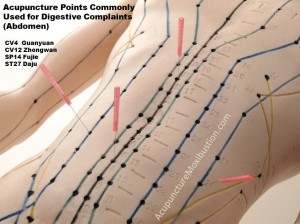
CLICK PIC
Just like the regulatory function of your nervous system, which utilizes a chemical/electrical property to control and coordinate your body, the acupuncture meridians and the energy that flows through those have a similar regulatory influence. Now if this electrical system is an independent system or just an extension of the nervous system we're not for sure. They obviously have an influence one on the other but much more research is needed to understand how they interact. When we work with the Meridian system we can simply hold and torque a point and get a response from the body. For instance let's talk about shoulder dysfunction for second. We have many methods to help restore normal range of motion when it is limited in the shoulder but one of them is what we call Meridian bending. We can have a patient who can only raise their arm about 90° due to pain or joint locking and then when we put pressure on the right point and torque it they can immediately raise to 180° which is normal range of motion for the shoulder. Not all shoulder problems are surgical, in fact probably most shoulder problems can be resolved with a combination of natural therapies. But every time that I see a patient go from 45° to 90° limited shoulder range of motion to a normal range of motion immediately after Meridian bending it amazes both me and the patient. But this shows how electrical problems can cause disruption in the normal muscular coordination of the complex shoulder joint. Simply, if one or more muscles are not in proper tone this can throw the shoulder out of balance causing limited range of motion. The same type of Meridian therapy can eliminate pain immediately in some cases or even improve function of internal organs.

CLICK PIC
Electrical imbalances can be caused by emotional stress, electrical stress with sensitive patients, like from computers, cell phones etc. and also can be caused by physical trauma. There are several ways to diagnose imbalances in the electrical system as well as several ways to correct the imbalance. The use of light (colors), magnetic stimulation, electrical stimulation, homeopathic remedies, sound (music), classical acupuncture needles and stimulators called press needles (tiny little thumbtack like stimulator) can help bring the electrical balance back to the Meridian system. As we have alluded to earlier when your electrical system is out of balance this can affect your moods, energy, function of organs and glands, causing structural problems and different types of pain patterns etc.
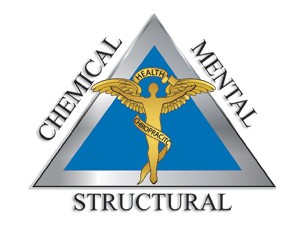
CLICK PIC
If you have a chronic health issue and no one else has been able to help you it could be that you have an electrical imbalance. As a chiropractic physician we consider structural, chemical and electrical issues when we are trying to help a patient recover their health. Most physicians have never been trained in treating let alone diagnosing electrical problems. Most physicians look at you as a bag of chemicals that need to be manipulated with other chemicals, this is not healthcare.
You only have one body and if you treat it well it will treat you well. Stay healthy!
LINK:light-color-and-health
LINK:natural-health-care-can-help-you
LINK:emotional-freedom-techniques-eft
LINK:vega-testing-a-look-at-the-bodys-computer
Scientists often distinguish between “wanting” (“when I get this thing, life is better”) and “needing” (“unless I get this thing, life is worse”). In other words, “want” applies when you’re still trying out something; “need” applies when it owns you.
There is an equally interesting, if subtler, distinction between “wanting” and “liking.” Many times, we want more of something without liking it more. This category often covers things that we use instrumentally to achieve a long-term goal: For example, “I don’t like these gewgaws, but I want them all very badly because there’s a great potential market of people who want them even worse.”
A recent paper by Alison Jing Xu of the University of Minnesota and colleagues, published in the Proceedings of the National Academy of Sciences, shows how brain wiring can throw a wrench into this logic of wanting versus liking—so that we end up wanting something that we not only don’t like but also can’t use to better our lives in any way.
We start with a no-brainer: When our bodies are low on calories, we feel hungry. We animals then hunt more tenaciously, climb higher to search in trees for fruit, look longer for bugs to eat and—if we are pets—push our empty food bowls more irksomely against our owners’ ankles. In other words, hunger motivates food-acquisition behavior.
As it turns out, hunger also subliminally shifts our cognition. Prof. Xu’s team had volunteers look at a screen where combinations of letters appeared for a fraction of a second, and subjects had to rapidly say whether the letters formed correctly spelled words. Subjects who were hungry were more accurate at recognizing food-related words (”I have no idea if that was ‘broom’ or ‘broon,’ but that sure was ‘cookie’.”) So our basic animal wiring (“me hungry, me get food”) can unconsciously infiltrate how we perform the very sophisticated human task of reading comprehension.
But Prof. Xu’s team found something even more intriguing. When subjects doing the word/nonword task were hungry, they not only improved on food-related words but get better by an equal measure at assessing the accuracy of words related to acquisition in general (e.g., want, obtain, gain). Hunger doesn’t just prime us to think about food acquisition; it primes us to think about acquisition in general.
The researchers also found other evidence of this motivational shift. They gave 77 subjects a list of five food and five nonfood items and asked them to rate how much they wanted each one. Hungry subjects wanted both the food and the nonfood items more intensely than sated ones did.

CLICK PIC
It's really difficult for all of us to see when we are being programmed or manipulated through advertisement/propaganda. But pharmaceutical companies spend billions of dollars on conditioning the population to choose its products over other methods of treatment. And sometimes we're in automatic mode when we decide our choice in healthcare. This can be a problem for a number of reasons. The first thing to consider is if you are deciding to utilize a drug as your first option you might not understand the dangers of that approach. Besides the over 2000 deaths per week due to the side effects of pharmaceutical drugs and the fact that medical care is a number one cause for death in United States based on CDC statistics there are other reasons to think twice about drugs being your first approach.

click pic
Simply put drugs don't heal, drugs alter your perception of the condition. Let's take headaches for example most headaches are caused by misalignments in the upper neck (muscle tension), other causes could be toxicity problems, allergies, low blood sugar or hormonal problems. Which of these do you think an aspirin fixes? Did you know aspirin causes bleeding in the stomach, Excess Stomach Acid Secretion, Stomach Cramps, Blood coming from Anus, Decreased White Blood Cells? This is just a partial list of potential side effects. Again the aspirin doesn't treat any of the underlying causes for your condition. Let's say your headaches were related to hormonal imbalances because of the developing ovarian cyst. You keep treating the headaches with an aspirin and your ovarian cyst keeps getting worse to the point that it might burst. Wouldn't it have been nice if the physician you went to wanted to understand the source of your headaches? But a common problem is if you're a MD/DO and have powerful drugs that can mask symptoms then when a patient presents with certain symptoms you are just gonna write a prescription and consider it appropriate care.
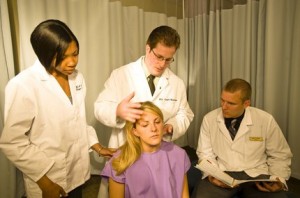
click pic
As a chiropractic physician we don't mask symptoms with drugs, we have to figure out why the symptom is there. Just to classify the headache is a tension headache or migraine headache and then give the latest masking drug the pharmaceutical company has recommended, in my opinion, is not proper healthcare. Proper healthcare tries to determine the underlying cause for the condition and correct the cause. I'm not saying that can be done 100% of the time because we don't understand the body fully, I am saying that most the time it can be. The underlying cause for allergies is not an antihistamine deficiency it's an inappropriate functioning immune system. When you correct the immune system you correct the allergies. Acid reflux is not an antacid deficiency it is an imbalance somewhere within the digestive system. It needs to be found and corrected which might include changing your diet. Back pain is not a muscle relaxer or anti-inflammatory deficiency disease.
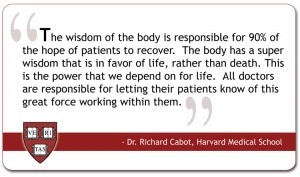
click pic
When you just treat the symptoms you allow the condition time to get worse. This is one of the reasons that chronic diseases are such a high prevalence in our society. When you chronically just treat symptoms over a lifetime you end up with a basket full of chronic conditions. And this is why many people live their last 10 or 15 years of life in a nursing home, in a wheelchair suffering from multiple health problems. If you don't want to end up there you have to change the choices you make with your body. The fact is most drug therapy is inappropriate. Let me make this clear, there is a time for drugs and there is a time for surgeries but they should be the last approach. Unfortunately when you let certain conditions developed to the point of no return you eliminate a number of your options to get well.

click pic
Natural healthcare focuses on health not disease. Disease care has led to horrible health statistics for countries that focus their attention there. When a type II diabetic is taking one, two or three different medications to try to control their blood sugar they are in fact shortening their life span and making chronic disease more likely. The sad thing is the vast majority of type II diabetics can be drug free and healthy by some simple dietary and nutritional approaches. Lowering your blood sugar with drugs to force the sugar out of the body is not the same as correcting the blood sugar problem. Find the cause, correct the cause.

click pic
It is true that antibiotics can help clear acne in patients who suffer from it but it's also true that antibiotics will wreck havoc on your digestive track and weaken your immune system. Is acne a antibiotic deficiency disease? The skin is just the expression of the health of the body. Acne has to do with body ecology, hormonal balance and sometimes food allergies. The chances are the use of antibiotics will make each of these issues worse. And has anybody heard of superbug infections? The overuse of antibiotics is the number one cause for death from superbug infections that have been growing every year for the past 25 years. Is there a place for antibiotics? There is but it's very rare. There are so many natural immune boosting techniques in natural healthcare that well over 98% of my patients never require any antibiotics in their lifetime as long as they are following the approaches we recommend. Sure there are exceptions to every rule but in our society the exception is the rule.
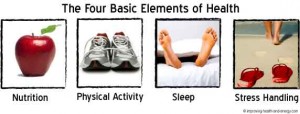
click pic
Do you want to be healthy? Drugs are not going to get you there. Drugs could save your life but the same drugs that saved your life could end your life if you keep taking them. Drugs are toxic, drugs are dangerous. If you want to be healthy then you have to practice a healthy lifestyle. Did you know your nervous system controlled and coordinated everything that happens in your body? That's why we focus on spinal health to maintain a proper nervous system function. That is one of the five laws of health that we encourage patients to follow. The second law would be the law of diet. Do you really believe you could eat Twinkies all day and stay healthy? Of course not. But just like the big Pharma, big Food has programmed you into digging your own grave with your fork.
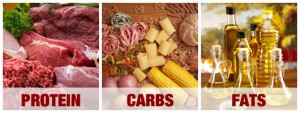
click pic
You have to eat a diet that's consistent with your genetic makeup and actually has real food in it. Eating right is really not that hard with a little direction you can increase your energy levels, strengthen your cardiovascular systems and maintain proper blood sugar levels very easily. The third law is exercise. You don't have to run a marathons, in fact you can over exercise to your detriment. Exercise is also related to your genetic makeup. Some people doing the wrong type of exercise can actually hurt themselves. People who have some type of moderate, regular exercise will be healthier than those who don't. Law four is a positive mental and spiritual attitude. Life can be hard you need to have coping skills in order to to be successful. Spiritual disciplines have been shown by research to make us healthier and to allow us to live a longer life. In the fifth law is rest and relaxation.
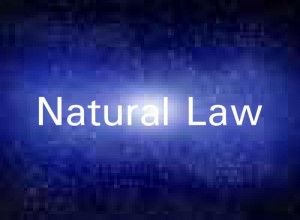
click pic
None of these laws are really difficult to follow you just need to find yourself in a culture that encourages these. The pharmaceutical approach is not that culture. It is nice to have a fire department, it's also a lot better that you never have to call them. And in most circumstances with a little prudence those disasters can be avoided. One of the best ways to find yourself in the culture of better health is to choose natural healthcare. Making natural healthcare your first choice can prevent a number of disasters in your life and your families health. You still might be referred to a medical specialist from time to time but if your primary care is a physician in the natural healthcare field your outcomes would be greatly improved.
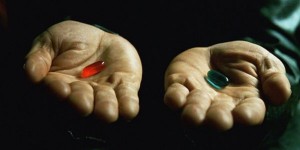
click pic
Are you locked in the matrix? Choose natural healthcare and choose a better life.
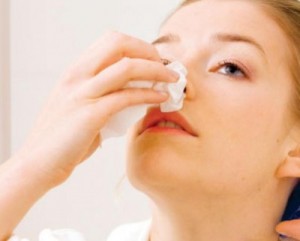
CLICK PIC
Nosebleeds can be dramatic and frightening. Luckily, most nosebleeds are not serious and can be handled fairly easily. They are divided into two types, depending on whether the bleeding is coming from the anterior (front of the nose) or posterior (back of the nose). Anterior nosebleeds make up more than 90% of all nosebleeds.
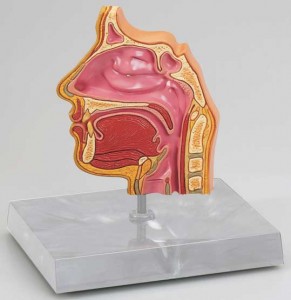
CLICK PIC
The bleeding usually comes from a blood vessel at the very front part of the nose. Anterior nosebleeds are usually easy to control, either by measures that can be performed at home or by a doctor. Posterior nosebleeds are much less common than anterior nosebleeds. They tend to occur more often in elderly people. The bleeding usually comes from an artery in the back part of the nose. These nosebleeds are more complicated and usually require admission to the hospital and management by an otolaryngologist (an ear, nose, and throat specialist).

CLICK PIC
Nosebleeds tend to occur during winter months and in dry, cold climates. They can occur at any age but are most common in children aged 2 to 10 years and adults aged 50 to 80 years.

CLICK PIC
Nosebleed Causes
Most commonly, trauma to the nose triggers a nosebleed. Trauma to the outside of the nose, such as a blow to the face, or trauma inside the nose, such as nose picking or repeated irritation from a cold, can cause a nosebleed.
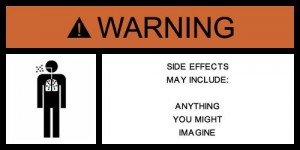
CLICK PIC
Less commonly, an underlying disease process, such as an inability of the blood to clot, may contribute to the bleeding. Inability of the blood to clot is most often due to blood-thinning drugs such as warfarin(Coumadin) or aspirin. Liver disease can also interfere with blood clotting. Abnormal blood vessels or cancers in the nose are rare causes of nosebleeds. High blood pressure may contribute to bleeding but is almost never the only reason for a nosebleed.
To stop a nosebleed:

CLICK PIC
Remain calm.
Sit up straight.
Lean your head forward. Tilting your head back will only cause you to swallow the blood.
Pinch the nostrils together with your thumb and index finger for 10 minutes. Have someone time you to make sure you do not release the nostrils any earlier.
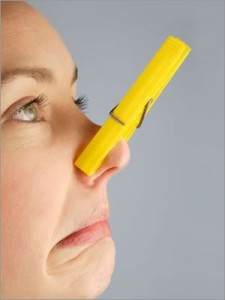
CLICK PIC
Tired of pinching? Use a clothespin.
Spit out any blood in your mouth. Swallowing it may make you vomit.
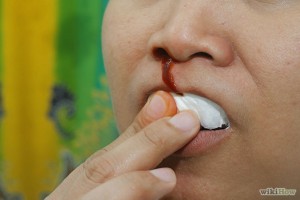
CLICK PIOC
Still dripping? Wad up a small piece of tissue or gauze, then stick it between your gums and upper lip in the area right under your nose. Leave it there for 5 to 10 minutes. The tissue puts pressure on the blood vessels that are sending blood to your nose. There are countless versions of this remedy—pouring vinegar, witch hazel, or lemon juice on the tissue; using a small square of brown paper from a bag sprinkled with salt; even placing a dime or a small, flat button under your upper lip instead of a tissue.
Apply an ice pack alongside the bleeding nostril. The cold narrows the blood vessels in the nose to slow the spurting.
Can you tell me how to stop frequent nosebleeds?
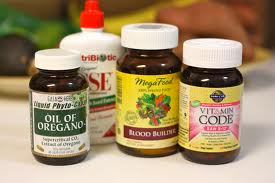
CLICK PIC
The power of prevention
If you want to avoid nosebleeds, keep your mucous membranes moist by drinking eight 8oz glasses of water a day. You are well hydrated if your urine is pale, not dark.
Don’t overdo the AC. Air-conditioning dries out the air, leaving you more prone to nosebleeds.
In winter, add moisture indoors by running a humidifier.
Spritz your nostrils liberally with a saline nasal spray.
Watch your aspirin intake. Aspirin can interfere with blood clotting, and of course that’s not a good thing if you get frequent nosebleeds.

CLICK PIC
If you have nasal allergies, treat them promptly. Between the constant irritation caused by allergens and the damage done by blowing your nose, nasal membranes take a real beating when you’re having an allergic reaction.
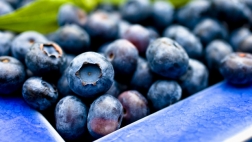
CLICK PIC
If you often have trouble with nosebleeds, take 1,000 to 1,200 milligrams of vitamin C every day to help prevent them. Vitamin C helps strengthen capillary walls and is also a vital component of collagen, a substance that gives your nostrils a moist, protective lining. Along with vitamin C, take 1000 milligrams daily of a bioflavonoid supplement such as grape-seed extract, pine-bark extract, pycnogenol, or proanthocyanins. Flavonoids are known to heal capillaries.
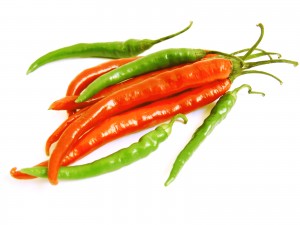
CLICK PIC
Cayenne pepper can help to prevent frequent nosebleeds. The suggested dose is 600 mg a day.
Finally, make sure you’re eating enough broccoli and leafy greens, which contain vitamin K, the clotting vitamin. If you continue to have frequent nosebleeds on this regimen, consider adding a vitamin K supplement, 100 mcg per day. (If you are taking Coumadin or another blood thinner, you need to avoid the synthetic form of vitamin K (MK-4). Instead, talk to your doctor about taking a low dose of K2 (MK-7), approximately 45 mcg per day) to stop or prevent frequent nosebleeds.
LINK:measuring stomach phfunction using ph paper
LINK: DO YOU HAVE LOW "T"
LINK:mothers your children deserve chiropractic care

click pic
It is said that we get sick one cell at a time and we get well one cell at a time. The natural healing process can be subtle sometimes, particularly if you are used to a drug affect in dealing with symptoms. Because drugs don’t heal they just suppress symptoms, sometimes the relief can be quick even though the underlying cause is not being addressed at all.
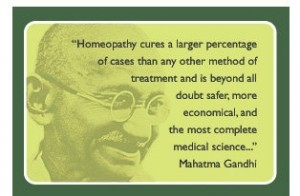
click pic
The natural healing process be it chiropractic, acupuncture, nutritional therapy, detox, better diet or exercise the results come from internal healing and the reestablishment of normal function. Sometimes patients can feel a somewhat fast improvement, but real healing takes time.

click pic
If we’re talking about chiropractic adjustments, the purpose is to establish normal nervous system function. Since your nervous system controls and coordinates every part and system of the body you can see why reducing the stress on the nervous system is so important. The body knows exactly what to do to maintain proper function (health), just sometimes it can’t express that information because of stress on key nerves. Be it acid reflux, allergies, headaches, back pain or hormonal imbalances the body knows how to correct these. But when the communication channels of the body get compromised by misalignments, the body is not able to maintain normal function and thus disease is the result. It can take months and maybe years before that disease becomes manifest through symptoms. And so when you start care you might think because the symptoms just started last week or last month that it’s a young condition. The truth is this condition could’ve taken years to first become symptomatic. Yes the symptoms started last week or last month but the condition started years before.
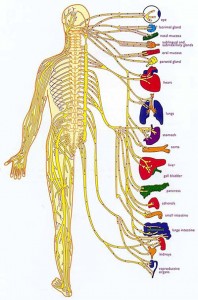
click pic
As we begin to correct the problem at the spine then cells that have been functioning improperly take time to heal and reestablish normal function. Luckily symptoms can disappear fairly quickly in most cases and this can be confusing to patients because when the pain is gone or the symptom has left, they can think that they are well again. This can cause them to mistakenly end care too soon. And thus the condition will continue to develop underground until you have breakthrough symptoms eventually, which could be somewhat different than the symptoms you had before.

click pic to order
A similar scenario happens when we are doing nutritional therapy. Nutrients due to faulty diet, stress and other factors can become imbalanced or deficient over time. This will cause cells to start to malfunction and when enough cells are malfunctioning then the organ will start to malfunction. Again symptoms will be the last to appear and usually represent something that’s taken months if not years to develop. As we determine what nutrients are necessary to restore normal function it can take time for the body to do the healing. Again when the symptoms leave it doesn’t mean the process is completed.

click pic
There are a series of steps that tend to take place in all healing. The body will need to detox poisons that have developed due to faulty diet and systems that are not functioning properly and thus not detoxing properly. And then nutrient levels have to be reestablished and rebalanced in order for cells to start functioning properly. And as enough cells start to function as they should then the organ will start to function better. The body will start replacing weak and sick cells with stronger or more healthy cells. And so you literally get healthier one cell at a time. As cells and thus organs start to function better then the body as a whole needs to rebalance how organs and glands are functioning in order to maintain overall health.

click pic
Health is really more of a journey than a destination. You’re never going to reach 100% health, that’s a goal that you always reach for. And in the process of reaching for better health you will find yourself functioning in much better health. As your body functions better you notice better energy, more restorative sleep, better mental focus and memory, more endurance and less susceptibility to illness.

click pic
There are five basic steps that you should always be taking on a regular basis if you’re committed to better health.
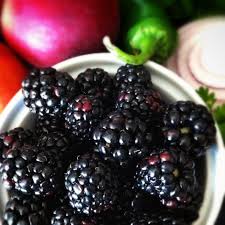
click pic
One is diet, this includes detoxification. Diet must be matched to your genetic makeup in order to supply you with the necessary building blocks to maintain good health. Just eating whole foods is not enough if you’re eating them in an unbalanced manner based on your genetic makeup, you need the appropriate ratio of fats, carbohydrates and proteins.

click pic
Step two is exercise again this should be balance to your body type. Exercise is not only good for conditioning but it helps the heart and improves the body’s elimination of toxins.

click pic
Step three is rest and relaxation. This helps eliminate the effects of stress on the body balancing neurotransmitters that can help with a sense of well-being and a better quality of sleep.

click pic
Step four is a positive mental and spiritual attitude This helps us focus better on our purpose in life and also improves our sense of well-being.
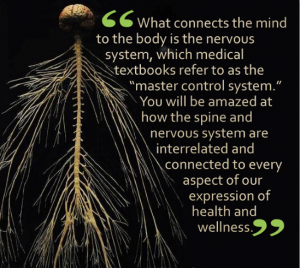
click pic
Step five is a healthy nervous system which is what chiropractic adjustments help accomplish by removing the stress on the nervous system itself.
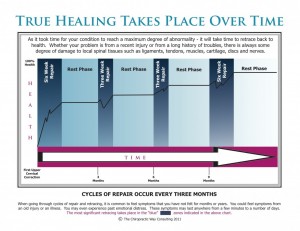
click pic
Health is your most important asset, without it you can’t be as productive as you need, you might not be able to support your family like you want, plus the quality of your life will suffer. The most important thing is that you focus on the most important thing.
LINK:LIGHT, COLOR AND HEALTH
LINK:KIDS AND CHIROPRACTIC
LINK:natural-healthcare-vs-drug-therapy-and-surgery/
Measuring stomach pH/function using pH paper
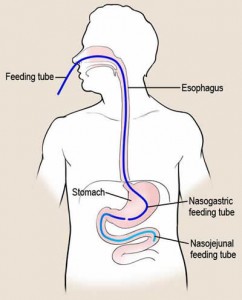
The official way to measure stomach pH is to start with the stomach empty so only fluid remains in the stomach. Stomach fluid is removed through a tube that is inserted into the stomach through the esophagus (food pipe).
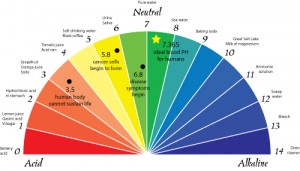
An easier way to approach this to get a “relative” stomach pH is to use pH paper to test your saliva. Normal saliva pH should be 6.4 as the pH of the stomach goes up and down the saliva will change in its pH as well.
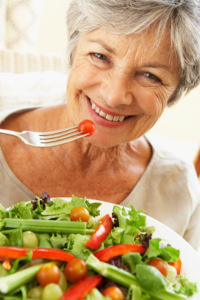
You can demonstrate this on yourself by checking your pH and then consuming a meal and recheck your pH over the next hour. You should notice that your pH becomes alkaline right away as the acid in the stomach is being diluted by the food. In most cases it takes 30 minutes to an hour before your pH returns to the pre-meal state. If it takes longer for your pH to return to normal that suggest a weakness in the digestive process. Even though this test doesn’t give you an exact stomach pH it will give you a functional pH significant enough to tell you how your digestive process is doing.
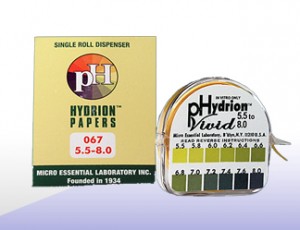
To do proper pH testing on the body it’s important to have pH paper that is sensitive to subtle changes. The common pH paper that’s found in the drugstore is usually not sensitive enough to do proper body pH testing. Some papers only test every .5 in the pH scale you want to paper that tests every .2 in the pH scale. Your urine and saliva pH should be 6.4 under normal circumstances during the day. The exceptions to this is that your urine pH becomes concentrated overnight and tends to be more acid. And so if you want an accurate urine pH it’s best to check it sometime after your first morning void. Then the pH should be 6.4 any other time that you tested it unless you’re having an allergy reaction which would tend to make it more acidic.
Your saliva as we mentioned earlier will become more alkaline right after a meal. So the best time to check your saliva pH is either before you eat or more than an hour after you eat.

By checking your saliva pH every 30 minutes after a meal can reveal subtle problems with the digestive process. If it takes more than an hour for your saliva pH to return to its pre-meal state then that suggest a weak digestive system.
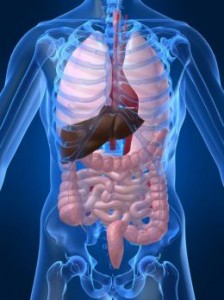
The problem in the digestive system causing your saliva pH to be off could be anywhere within the digestive track and so an evaluation is necessary to find the source of the problem. We recommend that if you start a meal at a pH 7 or higher that you take enzymes both before and after that meal. Most enzymes are best taken at the end of a meal unless their vegetable-based enzymes. The idea is that you want your digestive system to do as much as it can and then just supplement it to help improve a more thorough breakdown of your foods.

Undigested food is an irritant to your colon. This is why chronic use of antacids are so dangerous not only because they put undigested food which is an irritant to the lining of the colon but they also allow microorganisms that would normally be killed in the upper digestive track. HCl helps purify your food as well as breaking it down. So chronic use of antacids would deprive you of essential nutrients from the foods that you eat. And since minerals are metal they will be the first of the nutrients that you will start noticing deficiencies from. But other elements like B-12 are classically found low in people who use antacids chronically.
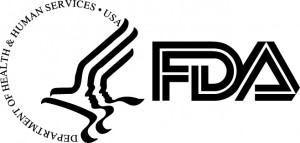
“The FDA report cautions against high doses
or prolonged use of PPIs, because they’ve been
shown to increase the risk of infection, bone fractures and dementia.”
But the danger doesn’t stop there. All acid stopping drugs (not just PPIs) inhibit nutrient absorption, promote bacterial overgrowth,reduce resistance to infection and increase the risk of cancer and other serious diseases.”

Your body pH, which is tested through the urine, can also be a factor affecting your digestive pH. It’s not uncommon to find both of these pHs to be extremely different and at opposite extremes. If your urine pH, body pH, becomes way too acid there can be a negative feedback loop that suppresses your stomach’s production of even more acid. So an attempt to correct your digestive pH you might have to utilize techniques to improve your body pH. Since most of our chronic diseases develop in an inflammatory chemistry having an acid urine can be a indicator of inflammatory chemistry.
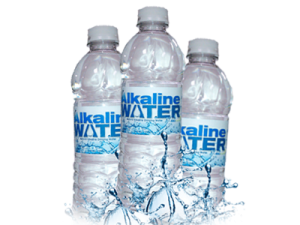
Utilizing alkaline water or alkalizing foods can have a healing effect on an inflammatory chemistry. You can ask for a pH food list to help correct your body pH if it is too acid or to alkaline. If your urine is too acid then you need to eat more alkalizing foods which are listed on the handout.
Alzheimer's
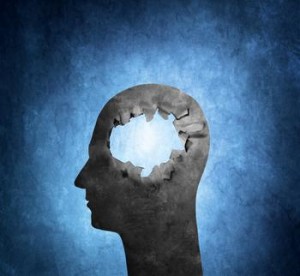
click pic
Alzheimer's disease was officially recognized a hundred years ago, but there's still no effective medical approach for it. Alzheimer's can be a devastating disease that can make a person disappear a little bit at a time. Eventually the person that you knew is no longer there which can be a hopeless experience. There is new understanding about this condition that has led to new approaches to help arrest and even reverse it. Most of you have heard of beta amyloid plaque which many thought was the cause of this disease. This plaque has been found on MRIs and used to be a way of judging the outcome of this disease. A drug was discovered that can reduce this beta amyloid plaque and was rushed into testing. The surprising results were that it accelerated the disease. The trials were quickly abandoned and a new understanding emerged of what was actually going on in the condition.
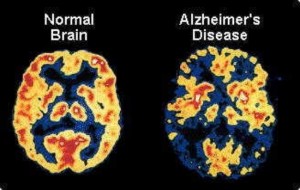
click pic
It has since been discovered this plaque is actually the body's defense against damage to the brain. Beta amyloid plaque is now understood as being in antimicrobial peptide. In other words is part of the body's immune system against damage. Recent studies have shown that while the adaptive immune system has limited access to the brain, the central nervous system can still mount a robust response to invading pathogens, antimicrobial peptides and the innate immune system. Vitamin D has been found to be one of the protective nutrients in controlling the damage to the brain. Even though vitamin D is not a cure-all for Alzheimer's, studies have shown it to benefit not only Alzheimer's but Parkinson's disease.
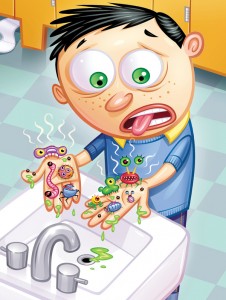
click pic
Studies have also found that the herpes simplex virus (the cold sore virus) is one of the different organisms that can initiate damage to the brain. This particular virus has been found in 90% of adults even though they don't show outbreaks of cold sores. But there are usually other factors besides this virus alone that sets up the process of damage within the brain. Chlamydia (chlamydophila penedumoniae) is also another microorganism found in the brain.
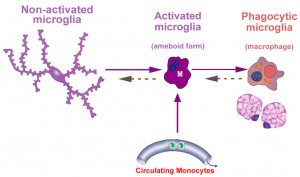
click pic
Microglia are a type of glial cell that are the resident macrophages (cells that consume microorganisms) of the brain and spinal cord, and thus act as the first and main form of active immune defense. These cells are found around the damaged area of the brain in Alzheimer's. These cells are activated in inflammatory chemistry and can be triggered by viruses, excitatory proteins, a lack of vitamin D and obesity.
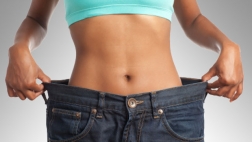
click pic
Studies show that obesity is a contributing factor to brain disease due to the inflammatory chemistry that is overdeveloped. So part of the process of preventing neurodegenerative disease is controlling inflammation and oxidation stress.
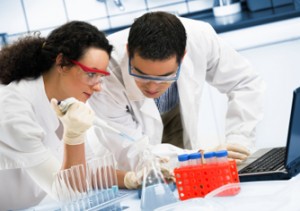
click pic
In a UCLA study, patients made dramatic lifestyle changes. They avoided simple carbs, gluten and processed foods. They increased their fish intake, took yoga and meditated. They were instructed to take melatonin, get adequate sleep, incorporate vitamin B-12, vitamin D-3 and fish oil. Within six months, nine of the 10 memory-loss patients saw a noticeable improvement in memory. One patient, who was in the late stages of Alzheimer's, did not show improvement.

click pic
Inflammation and tissue toxins are obvious contributors to Alzheimer's. The dietary recommendations and the nutritional support recommended tend to be directed towards reducing inflammation.
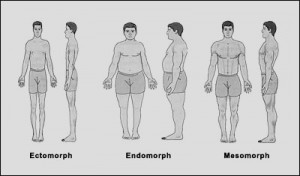
click pic
Following your body type diet is crucial in controlling inflammation. Also the latest research on sleep indicates this is how your brain detoxifies itself.

click pic
Spending time in meditation or prayer can have a calming affect on your nervous system. Chiropractic adjustments are a very effective way to reduce stress to the nervous system and maintain proper nerve function as well as organ and glandular function. Also regular chiropractic adjustments enhance immune function which can be important with Alzheimer's. Exercise is a way of controlling cortisol which is a stress and inflammation producing hormone from the adrenal glands.
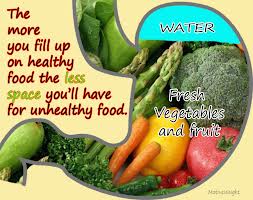
click pic
Some of the nutrients that can be helpful for Alzheimer's and focus on the Nrf2 antioxidant response pathway : vitamin D, coconut oil (MCT Oil), CoQ10, Alpha lipoic acid, phosphatidylserine, acetyl l-carnitine, l-lysine (for the herpes virus), curcumin, caloric restriction (improves mitochondria function), pterostilbene (from resveratrol) , sulforaphane (from broccoli, Brussels sprouts or cabbages) , green tea extract, garlic, DHA, glutathione, SOD (superoxide dismutase), nutrients for detoxification, exercise (20 minutes per day), sunshine, and a anti-inflammatory diet.

click pic
Vega testing is an excellent way to determine which of these products your body might need. Nobody needs all of these. Also non-GMO foods and organic foods would be smart if you're dealing with advanced memory issues. The use of Stevia over artificial sweeteners would be recommended and artificial food coloring and other food additives could be an issue. Eat foods in their natural state.
Drugs that damage the brain
Statin cholesterol-lowering drugs, antidepressants, beta blockers, diuretics, tamoxifen, methotrexate, anti-inflammatories, oral contraceptives, antibiotics, nighttime pain relievers, antihistamines, and other sleep aids, such as: Excedrin PM, Tylenol PM, Nytol, Sominex, Unisom, Benadryl, Dramamine and vaccines.
LINK:VEGA TESTING- a look at the body’s computer
The Diet-Heart Myth: Statins Don’t Save Lives when you look at the true stats
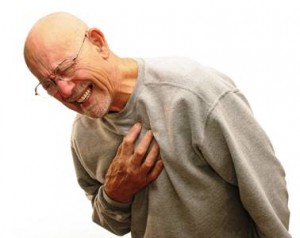
click pic
In this article, I will debunk the myth that statin drugs save lives in healthy people without heart disease, and discuss some of the little known side effects and risks associated with these drugs.
Myth: Statins save lives in healthy people without heart disease
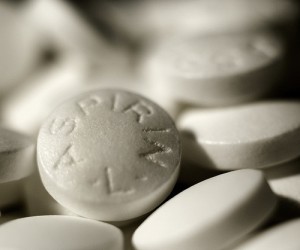
click pic
Statins have been hailed by many in the conventional medical establishment as wonder drugs, with some physicians going as far as suggesting they should be added to the water supply. (The doctor that made that particular suggestion is named John Reckless – I kid you not.) But are statins really the wonder drugs they’ve been made out to be?
Are statins really the wonder drugs they’ve been made out to be?
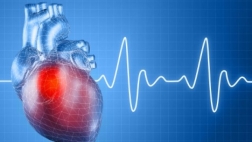
Before we dive into the statistics on statins, I need to briefly explain the difference between relative and absolute risk reduction. Researchers and pharmaceutical companies often use relative risk statistics to report the results of drug studies. For example, they might say “in this trial, statins reduced the risk of a heart attack by 30%”. But what they may not tell you is that the actual risk of having a heart attack went from 0.5% to 0.35%. In other words, before you took the drug you had a 1 in 200 chance of having a heart attack; after taking the drug you have a 1 in 285 chance of having a heart attack. That’s not nearly as impressive as using the 30% relative risk number, but it provides a more accurate picture of what the actual, or “absolute” risk reduction is.
With that in mind, let’s take a closer look at the efficacy of statins in two broad groups of people: those with pre-existing heart disease, and those without pre-existing heart disease. In the medical literature, these groups are referred to as “secondary prevention” and “primary prevention”, respectively.
Secondary prevention (those with pre-existing heart disease)
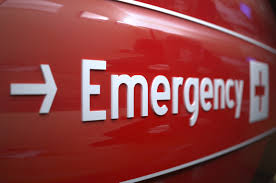
click pic
Absolute risk reductions range from 0.8% in MIRACL on the low end to 9% in 4S on the high end, with an average of 3%.
An analysis by Dr. David Newman in 2010 which drew on large meta-analyses of statins found that among those with pre-existing heart disease that took statins for 5 years (1):
- 96% saw no benefit at all
- 1.2% (1 in 83) had their lifespan extended (were saved from a fatal heart attack)
- 2.6% (1 in 39) were helped by preventing a repeat heart attack
- 0.8% (1 in 125) were helped by preventing a stroke
- 0.6% (1 in 167) were harmed by developing diabetes
- 10% (1 in 10) were harmed by muscle damage
Primary prevention (those without pre-existing heart disease)
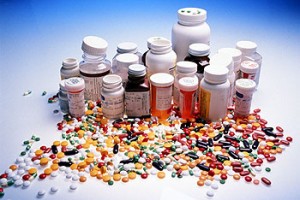
click pic
Statins do reduce the risk of cardiovascular events in people without pre-existing heart disease. However, this effect is more modest than most people assume. Dr. Newman also analyzed the effect of statins given to people with no known heart disease for 5 years (5):
- 98% saw no benefit at all
- 1.6% (1 in 60) were helped by preventing a heart attack
- 0.4% (1 in 268) were helped by preventing a stroke
- 1.5% (1 in 67) were harmed by developing diabetes
- 10% (1 in 10) were harmed by muscle damage
These statistics present a more sobering view on the efficacy of statins in people without pre-existing heart disease. They suggest that you’d need to treat 60 people for 5 years to prevent a single heart attack, or 268 people for 5 years to prevent a single stroke. These somewhat unimpressive benefits must also be weighed against the downsides of therapy, such as side effects and cost. During that hypothetical 5 year period, 1 in 67 patients would have developed diabetes and 1 in 10 patients would have developed muscle damage (which can be permanent in some cases, as we’ll see later in this section).
In addition, while statins do moderately reduce cardiovascular events such as heart attack in people without heart disease, they’ve never been shown to extend lifespan in this population. This is true even when the risk of heart disease is high. In a large meta-analysis of 11 randomized controlled trials by Kausik Ray, MD and colleagues published in the Archives of Internal Medicine, statins were not associated with a significant reduction in the risk of death from all causes. (6)
This trial included 65,000 people without pre-existing heart disease but with intermediate to high risk of heart disease. It was important because it was the first review that only included participants without known heart disease. Previous studies suggesting that statins are effective in reducing death in people without pre-existing heart disease included some people that did have heart disease, which would have skewed the results.

click pic
The lack of significant effect on mortality is even more interesting in light of the fact that LDL cholesterol levels did decrease significantly in the statin group; the average LDL level in those taking placebo was 134 mg/dL and the average in the statin-treated patients was 94 mg/dL—roughly 30% lower. Yet in spite of this marked reduction in LDL cholesterol in the statin group, there was no difference in lifespan between the two groups. This is yet another line of evidence suggesting that the amount of cholesterol in LDL particles is not the driving factor in heart disease.
A meta-analysis of statin trials in people without heart disease by the prestigious Cochrane Collaboration came to a similar conclusion. (7) They also observed that all but one of the clinical trials providing evidence on this issue were sponsored by the pharmaceutical industry. This is significant because research clearly indicates that industry-sponsored trials are more likely than non-industry-sponsored trials to report favorable results for drugs because of biased reporting, biased interpretation, or both. (8)
Adverse effects of statins

If statins were harmless and free, then it wouldn’t matter how many people need to be treated to prevent a heart attack or extend someone’s lifespan. But statins are not free, nor are they harmless. Statin use has been associated with a wide range of side effects, including myopathy (muscle pain), liver damage, cataracts, kidney failure, cognitive impairment, impotence and diabetes.
Unfortunately, studies show that physicians are more likely to deny than affirm the possibility of statin side effects, even for symptoms with strong evidence in the scientific literature. (9) Assuming that physicians would likely not report the adverse reaction in these circumstances, it’s probable that the incidence of statin side effects is much higher than the reported rates.
One of the most troubling side effects of statins that has only recently become apparent is their potential to increase the risk of diabetes, especially in women. A study by Dr. Naveed Sattar and colleagues published in The Lancet in 2010 examined 13 randomized clinical trials involving over 90,000 patients taking statins. They found that statin use was associated with a 9% increased risk in developing diabetes. Note that this is a relative risk, so the absolute risk of developing diabetes while taking a statin is very low. That said, observational data from the Women’s Health Initiative found a 48% increased risk of diabetes in healthy women taking statins after adjusting for other risk factors. (10)
Statin Myopathy: A Common Cause of Chronic Pain
By James J. Lehman, DC

Statin myopathy is a common dilemma that causes persistent myalgia(1) and chronic pain. Chiropractic physicians should be prepared to evaluate patients with these conditions. This article describes statin myopathy and its differential diagnosis.
While primary care physicians and chiropractic physicians treat more than 90 percent of chronic pain patients in the United States,(2) the treatment approaches vary considerably. Primary care providers, such as allopathic and osteopathic physicians, advanced practice registered nurses and physician assistants often focus on pharmacological therapeutics, including the use of opioids. Chiropractic physicians focus on nonpharmacological therapeutics to relieve pain due to neuromusculoskeletal conditions, which as of January 2015 are included in the standard of care promulgated by the Joint Commission.(3) As a member of the medical staff for a federally qualified health center, credentialed as a patient-centered medical home, I appreciate the Joint Commission’s new standards. There is a need to revolutionize the treatment of chronic pain in America,(4) and nonpharmacological therapeutics, including chiropractic and acupuncture interventions, are reasonable solutions.
The Community Health Center Inc. of Middletown, Conn. has integrated chiropractic services into nine primary care sites. Chiropractic specialists and chiropractic residents (e.g., nonsurgical orthopedics and neuromusculoskeletal medicine) evaluate and manage chronic pain patients as members of the primary care team. As one of the chiropractic specialists, I have encountered chronic pain patients who do not respond favorably to pharmacological care offered by primary care providers or the nonpharmacological chiropractic treatment. Often these non-responsive patients are taking statins to prevent heart attacks and death.(5) So now I consider statin myopathy as a possible cause of chronic pain. Since my training and scope of practice do not include pharmacological therapeutics, I do not alter the patient’s medications, but as an evidence-based and patient-centered provider, I have a responsibility to the patient and the primary care provider to communicate my diagnosis. Because I’m a member of the medical staff with full access to the electronic health care record, I am able to efficiently communicate my concerns to the prescribing primary care provider.
Since the majority of chiropractic physicians practice as solo practitioners or as associates in chiropractic practices,(6) they face a conundrum when a chronic pain patient presents with the symptoms of statin myopathy. It is common for prescribing physicians to deny drug toxicity and the symptoms of statin myopathy.(7) Although a doctor of chiropractic (DC) is capable of performing focused history and neuromusculoskeletal examination, which is essential when evaluating muscle complaints that may be induced by statins, the diagnosis is complicated for the chiropractic physician because the process usually involves a change in the statin prescription or a “statin holiday,” which is not within the chiropractic scope of practice. However, a DC does have the ability to contact the patient’s medical provider to discuss the statin and work with that provider on behalf of the patient.
Statin Therapy Guidelines
The Centers for Disease Control and Prevention estimated in 2010 that 32 million Americans take statin medications. 50 percent of men between 65 and 75 years of age and 39 percent of women ages 75 and older were taking statins from 2005 to 2008. One in four Americans over 45 years of age take statin medications.(8) New guidelines, formulated by the American Heart Association and the American College of Cardiology, would increase the use of statins for the older population to 87 percent of men ages 60 to 75 and 54 percent of women in that age range.(9)
The new guidelines recommend statin therapy for the following groups:(10)
• People without cardiovascular disease who are 40 to 75 years old and have a 7.5 percent or higher risk for having a heart attack or stroke within 10 years.
• People with a history of a cardiovascular event (e.g., heart attack, stroke, stable or unstable angina, peripheral artery disease, transient ischemic attack, or coronary or other arterial revascularization).
• People 21 and older who have a very high level of bad cholesterol (i.e., 190 mg/dL or higher).
• People with Type 1 or Type 2 diabetes who are 40 to 75 years old.
Incidence of Statin Myopathy
For several reasons, controlled clinical trials underestimate the actual percentage of patients who suffer statin myopathy and suggest that muscle problems are rare.(11) Observational studies in nonselected outpatients show a higher frequency of muscle complaints in the statin groups than in the control groups. Statin myopathy frequency has been reported at 9 to 20 percent with these studies. By some estimates, statin myopathy affects 7 million of the 33 million people taking statins in the United States, or 25 percent of the cases.(12)
In spite of the following warning offered by Consumer Reports regarding the use of statin medications, it appears that prescribing physicians usually reject any possible connection of statins and symptoms supported by evidence in the literature.
If you are taking a statin and have muscle aches, pain or weakness, call your doctor right away. This could be a sign of a dangerous breakdown in the muscle tissue.
A patient-targeted survey, addressing how physicians responded when patients presented with possible adverse drug reactions (ADRs) to statin medications, demonstrated that physicians usually do not acknowledge patients’ complaints including muscle pain. 87 percent of patients reportedly spoke to their physician about the possible connection between statin use and their symptom. Patients reported that they and not the doctor most commonly initiated the discussion regarding the possible connection of drug to symptom (98% vs 2% cognition survey, 96% vs 4% neuropathy survey, 86% vs 14% muscle survey; p < 10−8 for each). Physicians were reportedly more likely to deny than affirm the possibility of a connection. Rejection of a possible connection was reported to occur even for symptoms with strong literature support for a drug connection, and even in patients for whom the symptom met presumptive literature-based criteria for probable or definite drug-adverse effect causality. Assuming that physicians would not likely report ADRs in these instances, these patient-submitted ADR reports suggest that targeting patients may boost the yield of ADR reporting systems.(13)
Costs
Consumer Reports Best Buy Drugs lists a significant variation in costs for statin medications. In 2007, a generic statin costs as little as $12 per month or less, with brand-name statin costs escalating to more than $500 per month.(14) Normally, these medications are prescribed for long-term use, and cost is relevant for patients. Of interest is that up to 60 percent of patients discontinue use of statins within two years of the initial prescription.(15)
Key Points
A panel of four physicians, including three cardiologists and one neuroscientist, claims that statins are effective but under prescribed because of muscle toxicity concerns by physicians. The panel offers the following key points regarding statin myopathy:(16)
• There is little consensus on the definition of stat in-induced myopathy, and it is underdiagnosed.
• Abnormal pharmacokinetic activity contributes to toxicity, but some patients may be predisposed by underlying metabolic muscle disorders.
• A focused history and neuromusculoskeletal examination are important in the evaluation of muscle complaints that may be induced by statins.
• In patients with possible statin-induced myopathy, assessing the risks and benefits of statin therapy is essential.
• For patients who cannot tolerate statin therapy, alternatives include a “statin holiday” followed by a rechallenge with a different statin, intermittent rosuvastatin (Crestor) or resin therapy. Sometimes the best alternative is a compromise between the goal level for low-density-lipoprotein cholesterol and the level achievable with alternative therapy.
Pharmacokinetic Activities
In 1997, Lennemas and Fager described the pharmacodynamics and pharmacokinetics of the HMG-CoA reductase inhibitors and pointed out the similarities and differences. They explained the crucial role of hypercholesterolemia and the subsequent development of coronary heart disease and atherosclerosis and its risks of progression with increasing levels of total serum cholesterol or low-density lipoprotein (LDL) cholesterol.
The statins are reversible inhibitors of the microsomal enzyme HMG-CoA reductase, which converts HMG-CoA to mevalonate. This is an early rate-limiting step in cholesterol biosynthesis. Inhibition of HMG-CoA reductase by statins decreases intracellular cholesterol biosynthesis, which then leads to transcriptionally upregulated production of microsomal HMG-CoA reductase and cell surface LDL receptors.(17)
Adverse Effects
The FDA added a safety warning about associated cognitive impairment (e.g., memory loss, forgetfulness, amnesia, memory impairment and confusion) and the numerous interactions with cardiovascular and other drugs that may increase the toxicity of statins.(18) there are also increased risks of raised blood sugar levels and the development of Type 2 diabetes. Some drugs interact with statins in a way that increases the risk of muscle injury (myopathy), characterized by unexplained muscle weakness and/or pain.
Statin-Associated Muscle-Related Adverse Effects
In one case series involving 354 patients (age range 34-86 years) who self-reported muscle-related problems associated with statin therapy, 93 percent of the patients reported muscle pain, 88 percent fatigue and 85 percent weakness.(19) Patients with persistent muscle pain due to statin myopathy present with symptoms of muscle weakness, soreness, tenderness, stiffness, cramping or aching, either at rest or with exercise.(20) It is common for women taking statins to experience exertional fatigue and loss of energy.(21) In my experience, many patients suffering with chronic pain present with similar nonspecific muscle symptoms. Warren Hammer, DC, claims his patients complain of nonspecific muscle pain, tenderness, weakness, joint pains, peripheral neuropathy, tendinopathy and lupus-like symptoms that may be caused by the use of cholesterol-lowering drugs (statins).(22)
Differential Diagnosis
It is essential that specific definitions differentiate the types of statin myopathy. While myositis and rhabdomyolysis must be recognized and treated immediately, physicians have a tendency to deny a possible drug connection when a patient presents with myalgia or neuropathy.(23) The specific definitions developed by experts in the fields of cardiology, statin myopathy and drug toxicity attempt to clarify three different statin-associated musclerelated adverse effects: myalgia, myositis and rhabdomyolysis.(24)
A case report described two chiropractic patients presenting with chief concerns of neuromusculoskeletal pain complaints while taking statins. The first patient sought relief of pain in the neck, both legs and knees. The other patient presented with a chief concern of lower thoracic paraspinal pain. Both of these patients responded favorably with a statin holiday and a change in statin medications respectively.(25) The chiropractic physician did not advise the patients to discontinue their medications but referred them to their prescribing physicians.
Statin myopathy patients may present for chiropractic care complaining of chronic neuromusculoskeletal pains affecting the spine and/or extremities. Often there is no history of recent trauma. Provocative maneuvers may or may not reproduce the pains of chief concern. Conservative chiropractic treatments may provide only temporary relief or no relief of the persistent muscle or nerve pain. I suggest that whenever a patient presents with persistent muscle pain and a history of statin medications, you consider statin myopathy as a cause of the chronic pain.
Discussion
Patients suffering with musculoskeletal pain frequently present to chiropractic clinicians for evaluation and management.(27) The rising use of statins indicates that an increasing number of patients suffering with muscle pain, neurological symptoms and chronic pain due to statin toxicity will present to primary care providers and chiropractic clinicians. Hence, chiropractic physicians might be better prepared to evaluate patients with statin myopathy if the chiropractic colleges teach that to chiropractic students and graduates.
Chiropractic students, as part of their training, are taught to perform a differential diagnosis in order to determine the cause of the patient’s neuromusculoskeletal pain symptoms. The students determine the pain generator and its cause through the process of differential diagnosis, involving a focused history and physical examination. It is necessary to discuss the pharmacology and pharmacokinetics of statins. The need to communicate directly with the prescribing provider and the patient is stressed to the students. I suggest that evidence-based and patient-centered care mandates that when the neuromusculoskeletal complaints are due to statin myopathy, the attending chiropractic physician should advise the patient and the prescribing provider of these clinical concerns.
I suggest that the majority of chiropractic clinicians may not recognize this drug-induced muscle pain. It would be enlightening to receive feedback from chiropractic clinicians. So, I pose the following question collectively to the readers of this manuscript: “Would you recognize a patient with statin myopathy if he or she walked into your office?” Please respond to my email: jlehman@bridgeport.edu.
Endnotes
1. Fernandez G, Spatz ES, Jablecki C, and Phillips PS. Statin myopathy: a common dilemma not reflected in clinical trials. Cleveland Clinic Journal of Medicine, Vol 78, Number 6. June 2011.
2. Blondell RD and Ashrafioun L. Treating Opioid Dependency and Coexistent Chronic Nonmalignant Pain.Am Fam Physician. 2008 Nov 15;78(10):1132-1133.
3. Revisions to pain management standard effective January 1, 2015. Standard PC.01.02.07: The [organization] assesses and manages the [patient’s] pain. Joint Commission Online. Nov. 12, 2014. Available from: www.jointcommission.org/assets/1/23/jconline_November_12_14.pdf. [See Jan/Feb ACA News, Page 8]
4. The Mayday Fund. A Call To Revolutionize Chronic Pain Care in America: An Opportunity for Health Care Reform.
5. Baigent C, Keech A, Kearney PM, et al. Efficacy and safety of cholesterol-lowering treatment: prospective meta-analysis of data from 90,056 participants in 14 randomised trials of statins. Lancet 2005; 366:1267–1278.
6. For the Good of the Patient: The Integrative Chiropractor. ACA News. Available from:www.acatoday.org/content_css.cfm?CID=3298.
7. Golomb BA, McGraw JJ, Evans, MA Dimsdale, JE 2007. “Physician Response to Patient Reports of Drug Adverse Effects: Implications for Patient-Targeted Adverse Effect Surveillance.” Drug Safety; 30(8): 669-675.
8. Wehrwein P. Statin use is up, cholesterol levels are down: Are Americans’ hearts benefiting? Harvard Health Blog. Available from: www.health.harvard.edu/blog/statin-use-is-upcholesterol-levels-are-down-are-americans-hearts-benefiting-201104151518.
9. 2013 ACC/AHA Guideline on the Treatment of Blood Cholesterol to Reduce Atherosclerotic Cardiovascular Risk in Adults. J Am Coll Cardiol. Volume 63, Issue 25, Practice Guideline July 2014.
10. Doctor discussion is key for cholesterol treatment. American Heart Association. Blog.heart.org. Available from: http://blog.heart.org/doctor-discussion-is-key-for-cholesterol-treatment.
11. Ganga HV, Slim HB and Thompson PD. A systematic review of statin-induced muscle problems in clinical trials. Am Heart J. 2014 Jul;168(1):6-15. doi: 10.1016/j.ahj.2014.03.019. Epub 2014 Apr 12.
12. Vladutiu GD. Genetic predisposition to statin myopathy. Curr Opin Rheumatol. 2008;20-648-655.
13. Golomb BA, McGraw JJ, Evans, MA Dimsdale, JE 2007. “Physician Response to Patient Reports of Drug Adverse Effects: Implications for Patient-Targeted Adverse Effect Surveillance.” Drug Safety; 30(8): 669-675.
14. Choosing a Statin to Lower Cholesterol. Consumer Reports Health Best Buy Drugs.
15. Jackevicius CA, Mamdani M, Tu JV. Adherence of Statin Therapy in Elderly Patients with and without acute coronary syndromes. JAMA 2002;288:462-467.
16. Fernandez G, Spatz ES, Jablecki C, and Phillips PS. Statin myopathy: a common dilemma not reflected in clinical trials. Cleveland Clin J Med, Vol 78, Number 6. June 2011.
17. Lennemas H, Fager G. Pharmacodynamics and pharmacokinetics of the HMG-CoA reductase inhibitors. Similarities and differences. Clin Pharmacokinet. 1997 May;32(5). 403-425.
18. United States Food and Drug Administration FDA drug safety communication: important safety label changes to cholesterol- lowering statin drugs. Silver Spring (MD): The Food and Drug Administration; 2012. Available from: www.fda.gov/Drugs/DrugSafety/ucm293101.htm.
19. Cham S, Evans MA, Denenberg JO, Golumb BA. Statinassociated muscle-related adverse effects: a case series of 354 patients. Pharmacotherapy. 2010 Jun;30(6):541-53. doi: 10.1592/phco.30.6.541.
20. Linares LA, Golomb BA, Jaojoco JA, Sikand H, Phillips PS. The modern spectrum of rhabdomyolysis: drug toxicity revealed by creatine kinase screening. Curr Drug Saf. 2009 Sep;4(3):181-7. Epub 2009 Sep 1.
21. Golomb BA, Evans MA, Dimsdale JE, White HL. Effects of Statins on Energy and Fatigue With Exertion: Results From a Randomized Controlled Trial. Arch Intern Med/Vol 172 (NO. 15), Aug 13/27, 2012: 1180-1182
22. Hammer W. That Persistent Muscle Pain May Be Drug- Induced. Dynamic Chiropractic – Feb. 24, 2003, Vol. 21, Issue 05.
23. Golomb BA, McGraw JJ, Evans, MA Dimsdale, JE 2007. “Physician Response to Patient Reports of Drug Adverse Effects: Implications for Patient-Targeted Adverse Effect Surveillance.” Drug Safety; 30(8): 669-675.
24. Linares LA, Golomb BA, Jaojoco JA, Sikand H, Phillips PS. The modern spectrum of rhabdomyolysis: drug toxicity revealed by creatine kinase screening. Curr Drug Saf. 2009 Sep;4(3):181-7. Epub 2009 Sep 1.
25. Rodine RJ, Tibbles AC, Kim PSY, Alikhan N. Statin induced myopathy presenting as mechanical musculoskeletal pain observed in two chiropractic patients. J Can Chiropr Assoc. Mar 2010; 54(1): 43–51.
26. Cholesterol Lowering Drugs. Cleveland Clinic. Available from:http://my.clevelandclinic.org/health/diseases_conditions/hic_Cholesterol/hic_About_Cholesterol-Lowering_Drugs.
27. Chiropractic: An Introduction. National Center for Complementary and Integative Health (NCCIH).http://nccam.nih.gov/health/chiropractic/introduction.htm.
28. Kumar A and Cannon CP. Acute Coronary Syndromes: Diagnosis and Management, Part I. Mayo Clin Proc. Oct 2009; 84(10): 917–938.
29. Linares LA, Golomb BA, Jaojoco JA, Sikand H, Phillips PS. The modern spectrum of rhabdomyolysis: drug toxicity revealed by creatine kinase screening. Curr Drug Saf. 2009 Sep;4(3):181-7. Epub 2009 Sep 1.
Dr. James J. Lehman is an associate professor of clinical sciences and director of health sciences postgraduate education at the University of Bridgeport. He is a board-certified chiropractic orthopedist and neuromusculoskeletal medicine specialist at the Community Health Center Inc., in Waterbury, Conn., a federally qualified health center and a patientcentered medical home. Dr. Lehman teaches non-surgical orthopedics, neurosciences, neuromusculoskeletal medicine, evidence-based practice and health care reform classes for the University of Bridgeport. He also serves as the team chiropractor for the Bridgeport Bluefish pro baseball team and mentors fourth-year chiropractic clerks and chiropractic residents in orthopedics/ neuromusculoskeletal medicine. He can be contacted at jlehman@bridgeport.edu.
BREAST CANCER
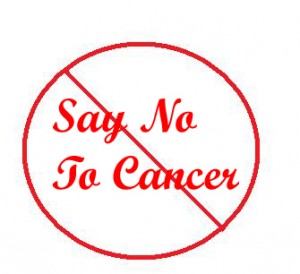
When we’re talking about breast cancer we want to look at basic issues that can adversely affect the breast. One of those is a bra that is not fitted properly and is too tight studies have shown this can lead to more breast disease, also bra with wire support have been suspected as well. The breast, due to granular activity have a lot of turnover and so lymph drainage is important which is enhanced by exercise, particularly arm exercises and plenty of fluids.

Fluid needs are based on body weight, one half of your body weight in ounces is considered a cleansing dose of fluids 80% of that is considered the minimum dose. For a 100 pound person that would be 50 ounces as cleansing and 40 as minimum. Estrogen balance is crucial because a high estrogen to progesterone ratio can promote breast cancer and other breast disease. A high-fiber diet can help control estrogen by improving the elimination of estrogen after it has been conjugated by the liver and dumped out through the bile into the colon. If you're constipated and thus have a longer than normal route time for things to move to the colon then the bacteria in the colon will release the estrogen back into the system causing an excess estrogen affect. Flax powder and soy products have a modulating effect on estrogen. Soy has gotten a bad name due to these substances within soy that have an estrogen or hormonal effect on a cell. But this effect is said to be 40 to 50% less potent than estrogen produced by the body. So it has a buffering effect on the cells and thus a protective effect. Again these substances are found in both soy and flax powder.
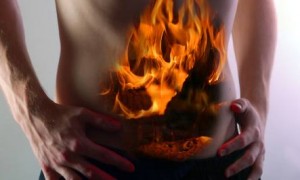
When we talk about cancer it's important to understand that cancer develops in a Pro inflammatory chemistry. One way to reduce inflammation is to eat a diet based on your body type. In most of the recommendations in this publication when it comes to food recommendations it should be modified based on your body type. For instance if you have a protein body type then being a vegetarian to try to fight the cancer could be counterproductive.

We have a list of anti-inflammatory foods that you can request. Talking about inflammation, body pH is important. And to understand body pH then evaluating urine pH will give insight on if your system is too acidic (Pro inflammatory) are two alkaline (Pro degeneration) and by requesting a food pH list you can modify your body's pH. Because Pro inflammatory and an acid pH go together, then drinking alkaline water can be helpful. Putting lemon or lime in your water, even though the juices acid to the tongue, once it goes through the digestive process it has a strong alkaline effect on the body. Two lemons or three small limes per quart of water is a good pH balancing drink if your system is too acidic. Urine pH should be 6.4.
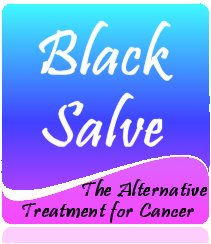
Black salve appears to be a great alternative to more radical surgical approaches and you can view several YouTube videos by just googling it.

Below you'll find dietary recommendations to help improve your immune system and biochemistry to enhance your body's defenses against cancer.

A plant-based diet. A recent study suggests that women who eat lots of fruit, veggies and legumes, and little red meat, salt and processed carbohydrates may lower their odds of developing estrogen-receptor negative breast cancer, which accounts for about a quarter of all breast cancers. And a study published in the American Journal of Epidemiology found that the likelihood of the cancer was 20 percent less when women followed such a diet.

Red, yellow and orange fruits and veggies. In December, researchers at Harvard Medical School said that women with higher levels of carotenoids, or nutrients found in fruits and veggies, have a lower risk of breast cancer, especially cancers that are more difficult to treat and have a poorer prognosis. Smart choices include carrots, sweet potatoes, spinach, kale, red peppers and winter squash. The study was published in the Journal of the National Cancer Institute.
- Consuming walnuts slowed the development and growth of breast cancer tumors in mice, according to a study published in 2011 in Nutrition and Cancer. Study author Elaine Hardman, a professor at Marshall University's Joan C. Edwards School of Medicine, looked at the effect of a diet containing the human equivalent of 2 ounces of walnuts a day (25 to 30 walnut halves). After 34 days, mice that ate walnuts had less than half the rate of breast cancer as a control group on the same diet minus the walnuts. The number and size of tumors also were significantly smaller for the walnut group. The study authors speculate that walnuts' anti-inflammatory properties are the reason.
Cutting back on alcohol. Even a moderate amount of alcohol is "clearly linked" to an increased risk of breast cancer, according to the American Cancer Society. Compared with non-drinkers, women who have two to five drinks a day are at least 50 percent likelier to develop the disease. If you have to drink, stick to a glass of wine (5 ounces), a shot of liquor (1.5 ounces) or a bottle of beer (12 ounces) a day.
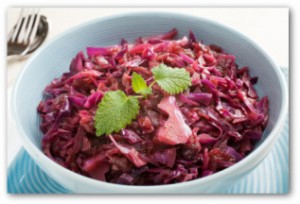
Cabbage and sauerkraut. Researchers at Michigan State University found that people who ate raw or lightly cooked cabbage and sauerkraut at least three times a week were 72 percent less likely to develop breast cancer than those who had it twice or less. High levels of glucosinolates – compounds found in cabbage – may be responsible.
Phytochemicals are nutrients found in plants. Some phytochemicals have been studied for their cancer-fighting benefits and their ability to prevent cancer from coming back.
- Soy. Soybeans contain phytoestrogens. These are nutrients similar to the estrogen in your body. Soybeans (also called edamame), tofu, soy milk, and miso soup contain phytoestrogens. Some researchers think they can help protect against the kind of breast cancer that depends on estrogen for its growth, but others don't. Ask your doctor whether eating one to three servings of soy foods a day would help you. It's possible it may interfere with hormone therapy or some other treatment.
- Antioxidants. Many vegetables, fruits, nuts, and other foods contain antioxidants. Foods with antioxidants include broccoli, liver, and mangoes. Antioxidants protect your cells from damage. Dietitians say you should eat a balanced diet with a variety of fresh foods to get antioxidants. That's better than taking megadoses insupplements.
- Beta-carotene. Beta-carotene gives carrots, apricots, yams, and other vegetables and fruits their orange color. Some studies that suggest that a diet high in beta-carotene-rich foods may lower the risk of dying from breast cancer.
- Lycopene. Lycopene is what puts the red in tomatoes and the pink in pink grapefruit. It might also help prevent recurrence of breast cancer.
Eat Your Cancer-fighting Vitamins.
12 foods to fight cancer:
One of the easiest things for a person touched by cancer to address is their diet. Here are 12 foods that can each play a role in fighting one or more steps in the multi-step cancer process.
Remember that ´good nourishment´ is a crucial weapon in the fight against cancer and any illness. Good cancer nutrition can be vital in increasing your personal odds of survival.
Remember too that natural compounds are likely to do you a lot more good than synthetic pills! So here are a few additions to your cancer diet, as a part of your own Integrated Cancer Treatment Programme.
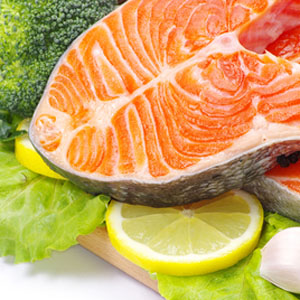
1: Oily Fish
Fish oil will provide long chain omega-3, a powerful anti-inflammatory in the body that minimizes COX-2 and its abilities to drive localized negative hormones called eicosanoids which inflame and irritate. Omega-3 has been shown to re-lengthen telomeres, which shorten when you have cancer putting the DNA structure at risk, and reducing longevity. Oily fish also contain vitamin A, an important vitamin in the fight against cancer (herring, mackerel and salmon are top of the list). Fish oils have been linked to reduced levels of prostate, breast and colon cancer. Research shows they help prevent cachexia when having chemotherapy. You´ll also get a little vitamin D from them, another proven cancer-fighter.
2: Carrots
Along with apricots, peppers and pumpkins, they provide cancer carotenoids like beta-carotene, which converts to vitamin A, when required by the body. 1 cup of carrot juice, 2 sweet potatoes, 16 dried apricots and 4 cups of red cherries will each provide 25mgs. Don´t eat them all at once - people have been known to turn a little orange! A great juice to make yourself involves carrots and apples (for quercitin) and beetroot (for anthocyanins). A real cancer fighting drink! Carotenoids are also found in natural food sources such as chlorella.

3: Red and Yellow Peppers
The top source of vitamin C in the UK - even better than oranges. Vitamin C strengthens your immune cells and neutralises toxins. Linus Pauling thought cancer patients should consume 2 to 10 gms per day. A large red pepper is 250 mgs. 200 gms raw broccoli 175 mgs. 150 gms papaya 90 mgs. An orange 65 mgs. Berries and cherries are great sources. Red and yellow peppers are also good sources of carotenoids.
4: Sunflower Seeds
High in zinc and vitamin E. Zinc helps vitamin C do its work and accelerates healing time. It is important to a healthy prostate. You need 15 to 25 mgs per day. Five tablespoons of sunflower seeds give you 10 mgs. Best are oysters, 3 are enough. Milk can block zinc absorption. Sunflower seeds will also provide a little selenium.
Pumpkin Seeds
Can be mixed with the sunflower seeds in your morning muesli. 5 tablespoons will each provide 20 mgs of vitamin E, the ultimate cancer buster, which inhibits cancer cell growth and protects immune cells from free radicals. Vitamin E boosts your immune system´s fighting abilities. The target is 300-600 mgs and is difficult to achieve without supplements. Green vegetables, soya and almonds are also good sources.
5: Brazil Nuts
Six cracked nuts will give you your daily selenium; 100 to 200 mcgs is the goal. Selenium is a very potent anti-cancer agent. Eight slices of wholemeal bread, an organic egg, or a large chicken breast will also be enough.
Tuna, onions, broccoli and tomatoes contain selenium too.
6: Mushrooms
There´s an enormous body of research evidence now that shows how ´medicinal´ mushrooms (Shiitake, Maiitake, cordyceps etc) boost the immune system and fight cancer. Even the button mushroom has cancer fighting ingredients. We have a great review on medicinal mushrooms


7: Tomatoes
Seven to ten helpings per week, especially cooked.
According to Harvard research 7-10 helpings a week cuts prostate symptoms by 40% and has an influence on many cancers e.g.: lung; colon; cervix; breast. Lycopene is the prime active ingredient, and 25 - 40 mgs the desired daily dose.
It is also found in strawberries, peppers, carrots and peaches, but one tin of tomato soup has 65 mgs alone. Lycopene helps reduce ´bad´ fat levels in the blood stream and is a strong antioxidant.
8: Egg Yolk
Along with green leafy vegetables, avocado, beans, carrots, apricots and pumpkins, egg yolk will give you folic acid.
This will help your DNA to replicate properly and protect it during radiotherapy.
400 micrograms is a recommended amount. Folate, biotin, niacin and vitamin B6 are all B vitamins that help in the cancer fight. Egg yolk, greens and whole grains are the best sources.
9: Broccoli
And other green cruciferous vegetables e.g. cabbage, kale, Brussels sprouts, contain fibre which helps eliminate toxins
Moreover, the fibre is rich in galactose, which binds to damaging agents in the intestine.
Cruciferous vegetables also contain indoles, and especially indole3carbinol which, along with its metabolite DIM, modifies and diminishes aggressive oestrogen action, can modify cellular oestrogen receptor sites, and aids in fighting oestrogen-driven cancers like some breast, prostate, brain and colorectal cancers.
I3C and DIM were also found to have action in non-oestrogen driven cancers as they can also affect thep27 cancer pathway.
Finally, sulphorophane in broccoli and especially sprouting broccoli seeds helps the liver detoxify, and reduces stomach cancer tumours.
10: Garlic
It is a truly wonderful food. It seems to act to stop the spread of cancer in a number of ways, for example by stopping blood supply forming for tumours.
Garlic has a number of active ingredients. It contains selenium, tryptophan and sulpher based active agents that attack cancer cells.
Two or three raw cloves of garlic per day will ward off more than vampires.
11: Beetroot
And cherries, aubergines, red grapes - indeed any purple coloured fruits and vegeatables. They contain anthocyanins (and sometimes also resveratrol). Anthocyanins have been shown to kill cancer cells; resveratrrol has research supporting its role in fighting certain cancers like blood and brain cancers too.
12: Pulses
Lentils, chickpeas, beans and even soya etc. are a great source of fibre and protein without the animal fat.
Pulses also contain isoflavones, phytoestrogens. People get confused about plant oestrogen. The cells of your body have oestrogen receptor sites. When one form of human oestrogen (oestradiol) binds to them, the result is havoc inside your cells. About 40 times less potent is human oestrogen oestrone and about 40 to 50 times less potent still are plant oestrogens. Now which would you rather have sitting on your receptors? Pulses also provide fibres like lignans that can help neutralise free-radicals in the gut and blood stream.
- Pulse:
Pulses are part of the legume family, but the term “pulse” refers only to the dried seed. Dried peas, edible beans, lentils and chickpeas are the most common varieties of pulses. Pulses are very high in protein and fibre, and are low in fat. Like their cousins in the legume family, pulses are nitrogen-fixing crops that improve the environmental sustainability of annual cropping systems.
Pulses are a great tasting addition to any diet. They are rich in fibre and protein, and have high levels of minerals such as iron, zinc, and phosphorous as well as folate and other B-vitamins. In addition to their nutritional profile and links to improved health, pulses are unique foods in their ability to reduce the environmental footprint of our grocery carts. Put it all together and these sensational seeds are a powerful food ingredient that can be used to deliver the results of healthy people and a healthy planet.
Pulses come in a variety of shapes, sizes and colours and can be consumed in many forms including whole or split, ground in to flours or separated into fractions such as protein, fibre and starch.
Pulses do not include fresh beans or peas. Although they are related to pulses because they are also edible seeds of podded plants, soybeans and peanuts differ because they have a much higher fat content, whereas pulses contain virtually no fat.
Eat pulses every two days.
Fruit
Apple
Avocado
Black raspberries
Blackberries
Blueberries
Cactus Pear
Cantaloupe
Cherries
Clementines
Coconut
Cranberries
Currants
Grapefruit
Kiwi
Kumquat
Lemon
Lime
Lingonberry
Mandarin oranges
Mango
Nectarines
Orange
Papaya
Peach
Pears
Persimmon
Plums
Pomegranate
Pumpkin
Raspberries
Red grapes
Strawberries
Tangelos
Tangerines
Tomato
Herbs & Spices
Basil
Black pepper
Cardamom
chive
Cilantro
Cinnamon
Cloves
Curry
Galangal
Garlic
Ginger
Ginseng
Lavender
Licorice root
Mint
Nutmeg
Onion
Oregano
Parsley
Peppermint
Rosemary
Sage
Sesame seeds
Tarragon
Thyme
Turmeric
Vegetables
Artichoke
Arugula
Asparagus
Beets
Belgian endive
Bell pepper
Bok Choy
Broccoli
Brussel sprouts
Cabbage
Capers
Carrots
Cauliflower
Celery
Chard
Chicory
Chinese chives
Collard greens
Eggplant
Escarole (Categories: Endive)
Fennel
Garlic
Green beans
Kale
Kohlrabi
Lettuce
Mustard greens
Olives
Onion
Parsnips
Peas
Pumpkin
Radishes
Salsify
Scallions
Shallots
Soybean Sprouts
Spinach
String Beans
Sweet potato
Thistle
Tomato
Turnip
Watercress
Winter squash
Zucchini
Oils & Sauces & Condiments
Cocoa powder
Honey
Maple syrup
Olive oil
Olive paste
Red wine vinegar
Sesame oil
Soy sauce
Squid ink
Tomato sauce
Vanilla extract
White wine vinegar
Seafood
Anchovies
Cuttlefish
Flounder
Haddock
Halibut
Herring
Mackerel
Mussels
Oysters
Salmon
Sardines
Sea cucumber
Seaweed
Shrimp and Prawn
Squid
Squid ink
Trout
Tuna
Meat Products
Chicken dark meat
Goose (dark meat)
Turkey dark meat
Legumes & Nuts & Beans
Almonds
Broad bean
Cashews
Chestnut
Chickpeas
Edamame
Fava beans
Hazelnuts
Lentils
Lima beans
Miso
Natto
Peanuts
Pecans
Pine nuts
Pistachios
Sword jackbean
Tofu
Walnuts
Grains & Seeds & Flours
Black rice
Brown rice
Fennel seed
Flaxseed
Oats
Poppy seed
Pumpkin seed
Quinoa
Sesame seeds
Sunflower seed
Wheat
Whole grains
Beverages & Soups
Apple cider
Black tea
Carrot Juice
Cocoa powder
Coffee
Green tea
Miso
Orange juice
Red wine
Soy milk
White wine
Dairy
Hard cheese (Gouda, Jarlsberg, Emmenthal, Edam)
Yoghurt
Sweets
Chocolate
Cocoa powder
Honey
Maple syrup
LINK: breast cancer overdiagnosis
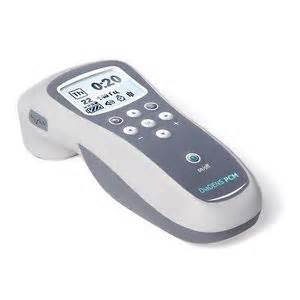
CLICK TO ORDER
DiaDENS
Our bodies, like the universe itself, are alive with electromagnetic forces. Life energy extends beyond the boundaries of our skin, as the latest research shows. By accessing the biological fields surrounding the human body and altering them in beneficial ways it is possible to treat diseases in a radical new way.
Welcome to “DiaDENS” a biofeedback pain eraser.
Today's advanced biofeedback systems are ultra-hi-tech scientifically produced instruments that use sophisticated biofeedback techniques employing a new type of "Virtual-Medicine" technology. The finest scientifically enhanced biofeedback devices turn out to be DENAS/DiaDENS (DENS) devices. DENAS and DiaDENS (DENS instruments) help you normalize your body voltage, advance your healing to help bring you good health
DENAS and DiaDENS are today's advanced versions of SCENAR®** biofeedback apparatus that were originally produced in the 70s by Russian medical organizations. They were initially designed and intended for cosmonauts' use.
It is Important to Note that in Russia today, DENS-Therapy is a part of the mainstream medicine and it is registered by the Russian Ministry of Health as an official independent method of treatment. It is taught in medical colleges as a separate discipline and may be pursued by students as a major professional specialization.
There is often no need to suffer from pain, soreness, out of balance body voltage, acute distension, distress, or almost any superficial infliction, illness, ailment, major pathology or physical disorder. Painful arthritis and osteoporosis can be of the past for you. Additionally, a DENAS or DiaDENS instrument can help alleviate conditions such as an aching backache, muscular pains, caused by overwork and activity as well as many internal related pathologies.
When ordinary medical remedies which involve drugs or pharmaceutical medicines fail you and cause new problems, it may be time for you to consider this new "space-age" solution. Additionally, when you discover that pharmaceutical and so-called methods of prevention are not really helping to correct the cause of your ailment, you may want try a new and different method. That "new method" is actually tried-and-true and proven effective throughout Europe, Australia and Russia. That method is DENS-therapy. DENS-therapy is really effective and may be an excellent solution to help you resolve problems with your health problems. DENS-therapy provides a solution that is a hi-tech, "Star Trek" type of therapy, a much less invasive solution.
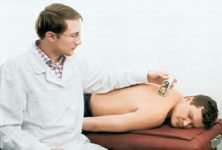
CLICK TO ORDER
The only thing you will feel is a slight sensation caused by the DENS device. In short, properly using a DENS device may bring you wonderful relief and to a healthy state of strength, and wellness.
Biofeedback, via the DENAS and DiaDENS instruments, invokes your natural immune system. The instrument, and your own physical biofeedback, instructs the apparatus to generate a signal that will be appropriate for dealing with your physical areas of distress. As a result, your physical system will quickly provide normal spontaneous healing energy to help reduce, or eliminate, your painful infliction or hurt, and to begin natural healing.
What to expect
As the DiaDens is moved across an area of the body and it picks up an area that needs treatment there will be both be tonal alert as well as a sensation of “stickiness” along the skin. This is where the device will start delivering the necessary electrical frequencies to rebalance the body. This will not only have a pain elimination affect but will also stimulate a more balanced function to that area of the body. It is not only beneficial for pain but can also help function of the internal organs.
The electrical frequencies that your body needs can be delivered directly from the unit or through pads placed on the body. The pain and symptom relief will have an accumulative effect. In other words if the first treatment caused a two-hour relief of symptoms then the second treatment could cause 4 to 6 hours of relief until the underlying problem has been completely resolved.
Very often after just a few moments of treatment, patients will sigh (called the “Diadens sigh” by experienced practitioners).
Sighing and yawning are known to be signs of emotional release. When emotional tension is released, the way a person breathes becomes deeper, more relaxed, and normalized. So breath, emotions, and neuropeptides are closely related.
Do you know someone in pain? Tell them about Keefe Clinic.

click pic
Benign essential tremor, also known as familial tremor or hereditary tremor is a progressive neurological condition that causes a rhythmic trembling of the hands, head, voice, legs or trunk. As with Katherine Hepburn many people mistake this condition with Parkinson's disease (tremor is a primary symptom of Parkinson's Disease). Other types of tremors are progressive disorders which need to be addressed with the appropriate medical and nutritional supplements in the hope of decreasing further degradation. Some other causes of tremors are cardiovascular stroke, head injuries, multiple sclerosis, stress, overactive thyroid, Magnesium or B Vitamin deficiency.
Possible causes of tremors

CLICK PIC
Excessive consumption of stimulants such as caffeine, alcohol (detoxification), nicotine, amphetamines and corticosteroids.
Exposure to mercury or heavy metal toxicity.
Side effects of pharmaceutical medications.
Nutritional deficiencies
Thyroid issues
Nervous system disorders
Excessive consumption of artificial sweeteners such as Aspartame
High levels of beta-carboline (Harman) from meat, soy or egg
Diet tips for nervous system health
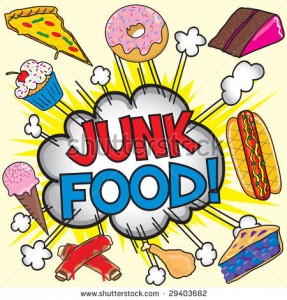
CLICK PIC
Reduce consumption of caffeine based products
Avoid using artificial sweeteners
Stop meat, soy and eggs for a period of time
Eat Flava beans and Cowhage (Velvet bean) because they contains high concentrations of an amino acid known as L-dopa (dopamine).
Lifestyle tips for nervous system health

CLICK PIC
Avoid stimulants such as caffeine and nicotine
Treat underlying nervous system tension
Address thyroid problems
Natural remedies for nervous system health

CLICK TO ORDER
The Amino Acid Isoleucine - a component of proteins, reduces excitation of nerve fibres
Magnesium - improves neuromuscular transmission of signals across the nerve synapses to reduce excessive muscular contraction
CoQ10 - antioxidant, provides lipids to help protect the myelin sheath (electrical conduction), electrical potentiation of nerve signals
Alpha-lipoic acid - improves synthesis of energy within the muscles, antioxidant, reduces neural damage
Lecithin - protects the nerve sheaths from degradation and helps electroconductivity of the nerves
Fish oil - improves cell to tissue communication due to Docosahexanoic acid (DHA) content, maintenance of cellular membrane structure and fluidity, decreases inflammation
Homeopathics - Agaricus, Gelsemium, Magnesium Phosphate, Stramonium, Potassium Phospate, Passiflora, Chamomilla, Zincum Met., Phosphorus or Silica. These Homeopathic remedies may help to relieve nerve tension.
Herbal medicines that may assist to support the nervous system and adrenals are Oats, magnolia, chamomile, passionflower, ginkgo, St. John’s Wort, Ma Huang, Kava, siberian ginseng, licorice, sacred basil, withania, alfalfa, lavender, valerian, skullcap, lemon balm and zyziphus.
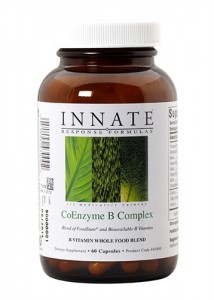
CLICK TO ORDER
1 Food sources that help with serotonin production - foods high in B-vitamins (brown rice, chicken, corn ,eggs, green leafs, legumes, meat, nuts, peas, sunflower seeds, nutritional yeast), Calcium (almonds, brewer's yeast, green leafs and cruciferous vegetables, fish with bones, sesame seeds, tofu), Magnesium (green leafs, brown rice, sesame seeds, shrimp, salmon) and Tryptophan (turkey, soy foods, peanuts, almonds).

CLICK TO ORDER
2 Essential fatty acids necessary for serotonin production are the omega 3's (fish oils found in mackerel, salmon, sardine, tuna; walnut oil, flax oil) and 6's (canola oil, chicken, eggs, flax, grape seed oil, safflower oil, sunflower oil, turkey, wheat germ oil) as well as Gamma-Linolenic Acid (black current oil, bluegreen algae, borage oil, evening primrose oil). I've also read that most people have an excess of omega 6's and need to decrease the amount of 6's in their diet in order for the 3's to function well. I guess most of us are lacking in 3's.
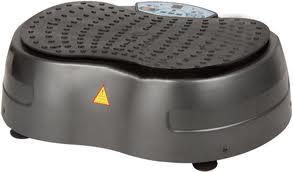
CLICK TO ORDER
3 Long-term stress depletes serotonin levels. Short term stress actually increases serotonin, but after time you get burn-out and it becomes increasingly difficult for the body to produce serotonin. So reduce stress--this can be as simple as adding exercise and meditation to the daily routine or as life changing as choosing to leave a really stressful job.

CLICK PIC
4-Avoid stimulants because they deplete serotonin over time--this works the same was stress does. We're talking things like caffeine, refined carbohydrates, chocolate, sugar as well as the heavier stimulants like cold remedies, alcohol, street drugs, diet pills and tobacco.
SEE LINK:
http://www.keefeclinic.com/wp/emotional-freedom-techniques-eft/
The up-and-coming flu season:
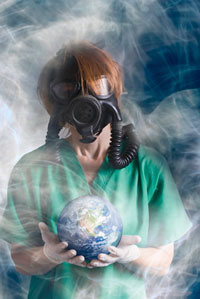
CLICK PIC
As a recent news article reported the current flu shot has missed the correct strain again. Even though the pharmaceutical companies are trying to put a happy face on it don't count on the flu shot being very effective this year again. I'm not sure if in the past five or so years they've ever gotten the strain right. If the theory of immunization is correct, and it's still a theory because it can't be absolutely proven, then you need to have a correct representation of the organism you are trying to develop an immunity to. They missed it again this year. The flu shot their offering does not have the correct strain of the flu for your body to react to.
What can you do for flu prevention?

CLICK PIC
First of all giving the flu shot is truly a shot in the dark. The fact is people that have gotten the flu shot still get the flu and people who don't get the flu shot don't get the flu. It's a matter of resistance. Good health is the best resistance to the flu. Eating right for your body type and blood type is number one. Getting plenty of fluids, mainly water is important. Remember half your body weight converted to oz.s is your cleansing dose. A 100 lb. person should drink 50 oz. a day as a cleansing dose of water. 80% of your cleansing dose is the minimum amount of fluids per day. That same hundred pound person should drink no less than 40 oz. a day. So if you feel like you're starting to come down with something drink your cleansing dose. Vitamin A&D and C. are key nutrients for the immune system. The best nutritional support would be one of the immune formulas that we carry. By Vega testing we can identify the best formula for you. These formulas support the immune system with the key nutrients that you would be lacking in order for your immunity to be low.
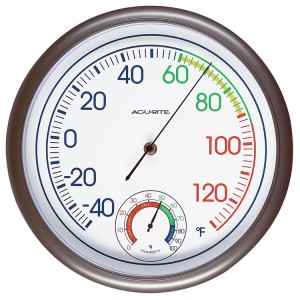
CLICK TO ORDER
Humidity is extremely important. During colder months home heating systems will dry the air out and thus your respiratory system. It’s essential to have a humidity gauge in order to determine your humidity, particularly in the bedroom. Healthy humidity is between 40 and 60%. During the wintertime the humidity could easily reach below 20%. As your sinuses and lungs dry out the barrier your mucous membranes supply is compromised and thus viruses can get into the system easier. The body’s response to this drying of the hair, skin and mucous membranes is to mobilize your vitamin A stores. As your vitamin A levels go down so does your immune system that’s why we recommend A&D more during the dry months of winter. I recommend an ultrasonic cool mist humidifier as it puts the most moisture into the air.

CLICK TO ORDER
Light deficiency can affect some people's immune system's. If you're one of those people who get a little blue or depressed during the winter months you would benefit from full spectrum light bulbs in your house. As well as spending time outdoors during bright sunlight days. Full spectrum light bulbs can be purchased on the Internet or at the local health food stores. These light bulbs contain the full spectrum of light that the sun delivers. People with strong immune systems don't get the flu. Stress is a big immune system suppressor. Exercise can help the effects of stress. Spinal adjustments are one of the best ways to distress your body and the immune system. Patients who get regular chiropractic adjustments have a 200% more effective immune response. We also have a homeopathic virus mix that helps tuneup the body's response to viruses. Combining two or more of these principles can go a long ways to preventing the flu this year.
Helpful links:
https://dl.dropboxusercontent.com/u/54379725/Study%20after%20Study%20Shows%20the%20Flu%20Shot%20is%20a%20Sca1.pdf
http://www.keefeclinic.com/wp/humidity/
http://www.keefeclinic.com/wp/chiropractic-releases-your-inborn-ability-to-heal/
BREAST CANCER

CLICK PIC
When we’re talking about breast cancer we want to look at basic issues that can adversely affect the breast. One of those is a bra that is not fitted properly and is too tight studies have shown this can lead to more breast disease, also bra with wire support have been suspected as well. The breast, due to granular activity have a lot of turnover and so lymph drainage is important which is enhanced by exercise, particularly arm exercises and plenty of fluids.
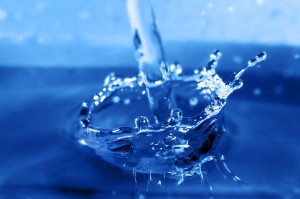
CLICK PIC
Fluid needs are based on body weight, one half of your body weight in ounces is considered a cleansing dose of fluids 80% of that is considered the minimum dose. For a 100 pound person that would be 50 ounces as cleansing and 40 as minimum. Estrogen balance is crucial because a high estrogen to progesterone ratio can promote breast cancer and other breast disease. A high-fiber diet can help control estrogen by improving the elimination of estrogen after it has been conjugated by the liver and dumped out through the bile into the colon. If you're constipated and thus have a longer than normal route time for things to move to the colon then the bacteria in the colon will release the estrogen back into the system causing an excess estrogen affect. Flax powder and soy products have a modulating effect on estrogen. Soy has gotten a bad name due to these substances within soy that have an estrogen or hormonal effect on a cell. But this effect is said to be 40 to 50% less potent than estrogen produced by the body. So it has a buffering effect on the cells and thus a protective effect. Again these substances are found in both soy and flax powder.

CLICK PIC
When we talk about cancer it's important to understand that cancer develops in a Pro inflammatory chemistry. One way to reduce inflammation is to eat a diet based on your body type. In most of the recommendations in this publication when it comes to food recommendations it should be modified based on your body type. For instance if you have a protein body type then being a vegetarian to try to fight the cancer could be counterproductive.

CLICK PIC
We have a list of anti-inflammatory foods that you can request. Talking about inflammation, body pH is important. And to understand body pH then evaluating urine pH will give insight on if your system is too acidic (Pro inflammatory) are two alkaline (Pro degeneration) and by requesting a food pH list you can modify your body's pH. Because Pro inflammatory and an acid pH go together, then drinking alkaline water can be helpful. Putting lemon or lime in your water, even though the juices acid to the tongue, once it goes through the digestive process it has a strong alkaline effect on the body. Two lemons or three small limes per quart of water is a good pH balancing drink if your system is too acidic. Urine pH should be 6.4.

CLICK PIC
Black salve appears to be a great alternative to more radical surgical approaches and you can view several YouTube videos by just googling it.
Below you'll find dietary recommendations to help improve your immune system and biochemistry to enhance your body's defenses against cancer.

CLICK PIC
A plant-based diet. A recent study suggests that women who eat lots of fruit, veggies and legumes, and little red meat, salt and processed carbohydrates may lower their odds of developing estrogen-receptor negative breast cancer, which accounts for about a quarter of all breast cancers. And a study published in the American Journal of Epidemiology found that the likelihood of the cancer was 20 percent less when women followed such a diet.

Red, yellow and orange fruits and veggies. In December, researchers at Harvard Medical School said that women with higher levels of carotenoids, or nutrients found in fruits and veggies, have a lower risk of breast cancer, especially cancers that are more difficult to treat and have a poorer prognosis. Smart choices include carrots, sweet potatoes, spinach, kale, red peppers and winter squash. The study was published in the Journal of the National Cancer Institute.
- Consuming walnuts slowed the development and growth of breast cancer tumors in mice, according to a study published in 2011 in Nutrition and Cancer. Study author Elaine Hardman, a professor at Marshall University's Joan C. Edwards School of Medicine, looked at the effect of a diet containing the human equivalent of 2 ounces of walnuts a day (25 to 30 walnut halves). After 34 days, mice that ate walnuts had less than half the rate of breast cancer as a control group on the same diet minus the walnuts. The number and size of tumors also were significantly smaller for the walnut group. The study authors speculate that walnuts' anti-inflammatory properties are the reason.
- Cutting back on alcohol. Even a moderate amount of alcohol is "clearly linked" to an increased risk of breast cancer, according to the American Cancer Society. Compared with non-drinkers, women who have two to five drinks a day are at least 50 percent likelier to develop the disease. If you have to drink, stick to a glass of wine (5 ounces), a shot of liquor (1.5 ounces) or a bottle of beer (12 ounces) a day.
Cabbage and sauerkraut. Researchers at Michigan State University found that people who ate raw or lightly cooked cabbage and sauerkraut at least three times a week were 72 percent less likely to develop breast cancer than those who had it twice or less. High levels of glucosinolates – compounds found in cabbage – may be responsible.

Phytochemicals are nutrients found in plants. Some phytochemicals have been studied for their cancer-fighting benefits and their ability to prevent cancer from coming back.
- Soy. Soybeans contain phytoestrogens. These are nutrients similar to the estrogen in your body. Soybeans (also called edamame), tofu, soy milk, and miso soup contain phytoestrogens. Some researchers think they can help protect against the kind of breast cancer that depends on estrogen for its growth, but others don't. Ask your doctor whether eating one to three servings of soy foods a day would help you. It's possible it may interfere with hormone therapy or some other treatment.
- Antioxidants. Many vegetables, fruits, nuts, and other foods contain antioxidants. Foods with antioxidants include broccoli, liver, and mangoes. Antioxidants protect your cells from damage. Dietitians say you should eat a balanced diet with a variety of fresh foods to get antioxidants. That's better than taking megadoses insupplements.
- Beta-carotene. Beta-carotene gives carrots, apricots, yams, and other vegetables and fruits their orange color. Some studies that suggest that a diet high in beta-carotene-rich foods may lower the risk of dying from breast cancer.
- Lycopene. Lycopene is what puts the red in tomatoes and the pink in pink grapefruit. It might also help prevent recurrence of breast cancer.
Eat Your Cancer-fighting Vitamins.
12 foods to fight cancer:
One of the easiest things for a person touched by cancer to address is their diet. Here are 12 foods that can each play a role in fighting one or more steps in the multi-step cancer process.
Remember that ´good nourishment´ is a crucial weapon in the fight against cancer and any illness. Good cancer nutrition can be vital in increasing your personal odds of survival.
Remember too that natural compounds are likely to do you a lot more good than synthetic pills! So here are a few additions to your cancer diet, as a part of your own Integrated Cancer Treatment Programme.
1: Oily Fish
Fish oil will provide long chain omega-3, a powerful anti-inflammatory in the body that minimizes COX-2 and its abilities to drive localized negative hormones called eicosanoids which inflame and irritate. Omega-3 has been shown to re-lengthen telomeres, which shorten when you have cancer putting the DNA structure at risk, and reducing longevity. Oily fish also contain vitamin A, an important vitamin in the fight against cancer (herring, mackerel and salmon are top of the list). Fish oils have been linked to reduced levels of prostate, breast and colon cancer. Research shows they help prevent cachexia when having chemotherapy. You´ll also get a little vitamin D from them, another proven cancer-fighter.
2: Carrots
Along with apricots, peppers and pumpkins, they provide cancer carotenoids like beta-carotene, which converts to vitamin A, when required by the body. 1 cup of carrot juice, 2 sweet potatoes, 16 dried apricots and 4 cups of red cherries will each provide 25mgs. Don´t eat them all at once - people have been known to turn a little orange! A great juice to make yourself involves carrots and apples (for quercitin) and beetroot (for anthocyanins). A real cancer fighting drink! Carotenoids are also found in natural food sources such as chlorella.
3: Red and Yellow Peppers
The top source of vitamin C in the UK - even better than oranges. Vitamin C strengthens your immune cells and neutralises toxins. Linus Pauling thought cancer patients should consume 2 to 10 gms per day. A large red pepper is 250 mgs. 200 gms raw broccoli 175 mgs. 150 gms papaya 90 mgs. An orange 65 mgs. Berries and cherries are great sources. Red and yellow peppers are also good sources of carotenoids.
4: Sunflower Seeds
High in zinc and vitamin E. Zinc helps vitamin C do its work and accelerates healing time. It is important to a healthy prostate. You need 15 to 25 mgs per day. Five tablespoons of sunflower seeds give you 10 mgs. Best are oysters, 3 are enough. Milk can block zinc absorption. Sunflower seeds will also provide a little selenium.
Pumpkin Seeds
Can be mixed with the sunflower seeds in your morning muesli. 5 tablespoons will each provide 20 mgs of vitamin E, the ultimate cancer buster, which inhibits cancer cell growth and protects immune cells from free radicals. Vitamin E boosts your immune system´s fighting abilities. The target is 300-600 mgs and is difficult to achieve without supplements. Green vegetables, soya and almonds are also good sources.
5: Brazil Nuts
Six cracked nuts will give you your daily selenium; 100 to 200 mcgs is the goal. Selenium is a very potent anti-cancer agent. Eight slices of wholemeal bread, an organic egg, or a large chicken breast will also be enough.
Tuna, onions, broccoli and tomatoes contain selenium too.
6: Mushrooms
There´s an enormous body of research evidence now that shows how ´medicinal´ mushrooms (Shiitake, Maiitake, cordyceps etc) boost the immune system and fight cancer. Even the button mushroom has cancer fighting ingredients. We have a great review on medicinal mushrooms
7: Tomatoes
Seven to ten helpings per week, especially cooked.
According to Harvard research 7-10 helpings a week cuts prostate symptoms by 40% and has an influence on many cancers e.g.: lung; colon; cervix; breast. Lycopene is the prime active ingredient, and 25 - 40 mgs the desired daily dose.
It is also found in strawberries, peppers, carrots and peaches, but one tin of tomato soup has 65 mgs alone. Lycopene helps reduce ´bad´ fat levels in the blood stream and is a strong antioxidant.
8: Egg Yolk
Along with green leafy vegetables, avocado, beans, carrots, apricots and pumpkins, egg yolk will give you folic acid.
This will help your DNA to replicate properly and protect it during radiotherapy.
400 micrograms is a recommended amount. Folate, biotin, niacin and vitamin B6 are all B vitamins that help in the cancer fight. Egg yolk, greens and whole grains are the best sources.
9: Broccoli
And other green cruciferous vegetables e.g. cabbage, kale, Brussels sprouts, contain fibre which helps eliminate toxins
Moreover, the fibre is rich in galactose, which binds to damaging agents in the intestine.
Cruciferous vegetables also contain indoles, and especially indole3carbinol which, along with its metabolite DIM, modifies and diminishes aggressive oestrogen action, can modify cellular oestrogen receptor sites, and aids in fighting oestrogen-driven cancers like some breast, prostate, brain and colorectal cancers.
I3C and DIM were also found to have action in non-oestrogen driven cancers as they can also affect thep27 cancer pathway.
Finally, sulphorophane in broccoli and especially sprouting broccoli seeds helps the liver detoxify, and reduces stomach cancer tumours.
10: Garlic
It is a truly wonderful food. It seems to act to stop the spread of cancer in a number of ways, for example by stopping blood supply forming for tumours.
Garlic has a number of active ingredients. It contains selenium, tryptophan and sulpher based active agents that attack cancer cells.
Two or three raw cloves of garlic per day will ward off more than vampires.
11: Beetroot
And cherries, aubergines, red grapes - indeed any purple coloured fruits and vegeatables. They contain anthocyanins (and sometimes also resveratrol). Anthocyanins have been shown to kill cancer cells; resveratrrol has research supporting its role in fighting certain cancers like blood and brain cancers too.
12: Pulses
Lentils, chickpeas, beans and even soya etc. are a great source of fibre and protein without the animal fat.
Pulses also contain isoflavones, phytoestrogens. People get confused about plant oestrogen. The cells of your body have oestrogen receptor sites. When one form of human oestrogen (oestradiol) binds to them, the result is havoc inside your cells. About 40 times less potent is human oestrogen oestrone and about 40 to 50 times less potent still are plant oestrogens. Now which would you rather have sitting on your receptors? Pulses also provide fibres like lignans that can help neutralise free-radicals in the gut and blood stream.
Eat pulses every two days.
BEST FOODS TO EAT
Fruit
Apple
Avocado
Black raspberries
Blackberries
Blueberries
Cactus Pear
Cantaloupe
Cherries
Clementines
Coconut
Cranberries
Currants
Grapefruit
Kiwi
Kumquat
Lemon
Lime
Lingonberry
Mandarin oranges
Mango
Nectarines
Orange
Papaya
Peach
Pears
Persimmon
Plums
Pomegranate
Pumpkin
Raspberries
Red grapes
Strawberries
Tangelos
Tangerines
Tomato
Herbs & Spices
Basil
Black pepper
Cardamom
chive
Cilantro
Cinnamon
Cloves
Curry
Galangal
Garlic
Ginger
Ginseng
Lavender
Licorice root
Mint
Nutmeg
Onion
Oregano
Parsley
Peppermint
Rosemary
Sage
Sesame seeds
Tarragon
Thyme
Turmeric
Vegetables
Artichoke
Arugula
Asparagus
Beets
Belgian endive
Bell pepper
Bok Choy
Broccoli
Brussel sprouts
Cabbage
Capers
Carrots
Cauliflower
Celery
Chard
Chicory
Chinese chives
Collard greens
Eggplant
Escarole (Categories: Endive)
Fennel
Garlic
Green beans
Kale
Kohlrabi
Lettuce
Mustard greens
Olives
Onion
Parsnips
Peas
Pumpkin
Radishes
Salsify
Scallions
Shallots
Soybean Sprouts
Spinach
String Beans
Sweet potato
Thistle
Tomato
Turnip
Watercress
Winter squash
Zucchini
Oils & Sauces & Condiments
Cocoa powder
Honey
Maple syrup
Olive oil
Olive paste
Red wine vinegar
Sesame oil
Soy sauce
Squid ink
Tomato sauce
Vanilla extract
White wine vinegar
Seafood
Anchovies
Cuttlefish
Flounder
Haddock
Halibut
Herring
Mackerel
Mussels
Oysters
Salmon
Sardines
Sea cucumber
Seaweed
Shrimp and Prawn
Squid
Squid ink
Trout
Tuna
Meat Products
Chicken dark meat
Goose (dark meat)
Turkey dark meat
Legumes & Nuts & Beans
Almonds
Broad bean
Cashews
Chestnut
Chickpeas
Edamame
Fava beans
Hazelnuts
Lentils
Lima beans
Miso
Natto
Peanuts
Pecans
Pine nuts
Pistachios
Sword jackbean
Tofu
Walnuts
Grains & Seeds & Flours
Black rice
Brown rice
Fennel seed
Flaxseed
Oats
Poppy seed
Pumpkin seed
Quinoa
Sesame seeds
Sunflower seed
Wheat
Whole grains
Beverages & Soups
Apple cider
Black tea
Carrot Juice
Cocoa powder
Coffee
Green tea
Miso
Orange juice
Red wine
Soy milk
White wine
Dairy
Hard cheese (Gouda, Jarlsberg, Emmenthal, Edam)
Yoghurt
Sweets
Chocolate
Cocoa powder
Honey
Maple syrup
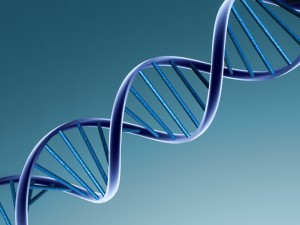
CLICK PIC
Can regular Chiropractic care affect you on a genetic level? The answer is yes. But how?
DNA is the molecule of life. It contains our genes which make us what we are. DNA makes up our chromosomes which are held in the nucleus of our cells. DNA is very fragile and susceptible to damage from environmental stresses. It is estimated that our cells experience anywhere from 1,000 to 1,000,000 incidences of DNA damage PER DAY.
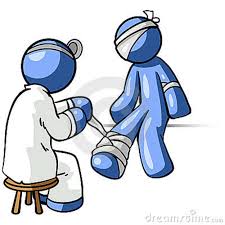
CLICK PIC
If this DNA damage is left and not repaired, our DNA sequences cannot be read or will not be read properly. This will result in abnormal cell function or expression. Three things can the occur; senescence, which means the cells stop dividing, cell death and/or tumor growth. All three are not good things as they lead to poor health and premature aging.

CLICK PIC
Going through life, we experience physical, chemical, and emotional stress. These stresses affect the function of the nervous system. The investigators hypothesized that these disturbances in nerve function could affect oxidative stress and DNA repair on a cellular level.
Oxidative stress, metabolically generating free radicals, is now a broadly accepted theory of how we age and develop disease. Oxidative stress results in DNA damage, and inhibits DNA repair.

CLICK PIC
The good news is that our cells are equipped with numerous enzymes (too many to list) whose job it is to continually repair this DNA damage. This DNA repair can be measured through blood tests that measure serum Thiol levels. The serum Thiol level is an indicator of the level of DNA repair. The higher serum Thiol, the more DNA repair and the better your health and aging.
In a landmark study published in the Journal of Vertebral Subluxation Research, chiropractors collaborating with researchers at the University of Lund found that chiropractic care could influence basic physiological processes affecting oxidative stress and DNA repair. These findings offer a scientific explanation for the positive health benefits reported by patients receiving chiropractic care.

CLICK PIC
The researchers measured serum thiol levels in 25 patients under short term chiropractic care, and 21 patients under long term chiropractic care. The results were compared to those of a non-chiropractic control group of 30 subjects.
Long-term chiropractic care of two or more years was shown to re-establish a normal physiological state independent of age, sex, or nutritional supplements. Symptom-free or primary wellness subjects under chiropractic care demonstrated higher mean serum thiol levels than patients with active disease, and produced some values that were higher than normal wellness values in non-chiropractic subjects.
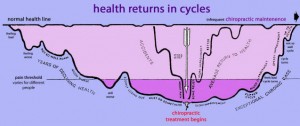
Serum thiols are primary antioxidants, and serve as a measure of human health status . The test provides a surrogate estimate of DNA repair enzyme activity, which has been shown to correlate with lifespan and aging.
After you have completed corrective Chiropractic care you need Wellness care to maximize your health potentials.
Ask about Wellness care.

CLICK PIC
Okay so most headaches will NOT kill you but if you look to pain killers as a cover up then that’s another story. The unprecedented rise in overdose deaths in the US parallels a 300% increase since 1999 in the sale of these strong painkillers. These drugs were involved in 14,800 overdose deaths in 2008, more than cocaine and heroin combined.The misuse and abuse of prescription painkillers was responsible for more than 475,000 emergency department visits in 2009, a number that nearly doubled in just five years.
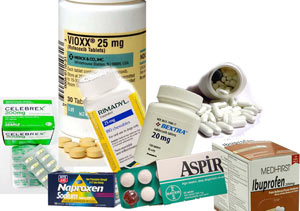
CLICK PIC
But if the pain pills don’t kill you then there is a growing problem with addiction. It is estimated today that there are more than 4.7 million Americans dependent on prescription painkillers, which represents up to 2% of the US adult population overall, and this number continues to grow every year.
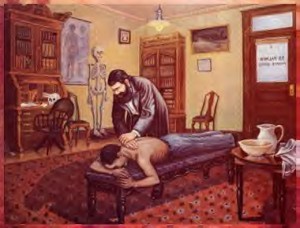
CLICK PIC
Studies show that chiropractic care is the most effective treatment on the planet for headaches. This is an important point: when your headache feels better with drugs you have not fixed anything, you’ve just covered up the problem. When your headaches get better under chiropractic care it’s because you’re correcting the underlining condition that’s causing the headache. Even when you think it’s just tension, tension just causes the muscles in your neck to tighten bringing out the misalignment in your neck that’s the root cause of your headache. If the misalignment wasn’t there the tension would not cause the headache.
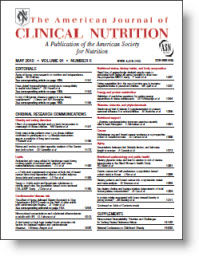
CLICK PIC
Adjustments help with most headache sufferers. When we add nutritional support and detoxification this helps correct more complicated headache conditions like migraines, hormonal causes or digestive causes to headaches. Not all headaches are the same.
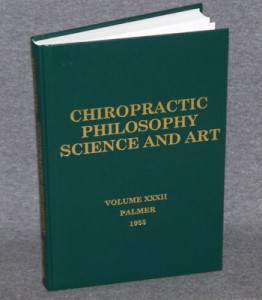
CLICK PIC
The nice thing about chiropractic care is that at first it’s natural, then safe and effective at finding the source of the problem and correcting the source of the problem. Tell someone you care about.
Click here to read more about headaches
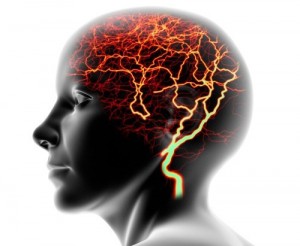
click here
Alzheimer's disease was officially recognized a hundred years ago, but there's still no effective treatment for it. Now researchers at UCLA say they've developed a program that shows for the first time memory loss being reversed.

CLICK HERE
It's not a drug; it's not a procedure; it is a novel, comprehensive and personal approach to treating memory loss associated with Alzheimer's. UCLA researchers spell out exactly what can be done to reverse what the disease does to the brain.
In the report provided by UCLA, Dr. Dale E. Bredesen explains how Alzheimer's is a complex disease affected by sleep, diet, even exercise.

CLICK HERE
Ten memory-loss patients, some with brain-scan-confirmed patterns of Alzheimer's, participated in a small UCLA trial called MEND (Metabolic Enhancement for NeuroDegeneration).

CLICK HERE
In the UCLA protocol, patients made dramatic lifestyle changes. They avoided simple carbs, gluten and processed foods. They increased their fish intake, took yoga and meditated. They were instructed to take melatonin, get adequate sleep, incorporate vitamin B-12, vitamin D-3 and fish oil.
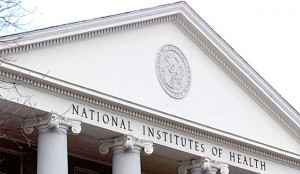
CLICK HERE
Within six months, nine patients saw a noticeable improvement in memory. One patient, who was in the late stages of Alzheimer's, did not show improvement.
UCLA researchers say the findings suggest at least early on, changing a person's metabolic processes can bring back memory and cognitive function.

CLICK HERE
Six of the patients of the patients in the study who had to discontinue working were all able to return to their jobs. Study authors say some patients were followed up to two and a half years and the memory improvements remained.

CLICK HERE
No single drug has been found to stop or even slow the progression of Alzheimer’s, and drugs have only had modest effects on symptoms. “In the past decade alone, hundreds of clinical trials have been conducted for Alzheimer’s, without success, at an aggregate cost of over $1 billion,” said Bredesen, who also is a professor at the Buck Institute.

CLICK HERE
Bredesen’s program, including:
- eliminating all simple carbohydrates, gluten and processed food from her diet, and eating more vegetables, fruits and non-farmed fish
- meditating twice a day and beginning yoga to reduce stress
- sleeping seven to eight hours per night, up from four to five
- taking melatonin, methylcobalamin, vitamin D3, fish oil and coenzyme Q10 each day
- optimizing oral hygiene using an electric flosser and electric toothbrush
- reinstating hormone replacement therapy, which had previously been discontinued
- fasting for a minimum of 12 hours between dinner and breakfast, and for a minimum of three hours between dinner and bedtime exercising for a minimum of 30 minutes, four to six days per week

CLICK HERE
Inflammation and tissue toxins are obvious contributors to Alzheimer's. The dietary recommendations and the nutritional support recommended tend to be directed towards reducing inflammation.
Following your body type diet is crucial in controlling inflammation. Also the latest research on sleep indicates this is how your brain detoxifies itself.

CLICK HERE
Spending time in meditation or prayer can have a calming affect on your nervous system. Chiropractic adjustments are a very effective way to reduce stress to the nervous system and maintain proper nerve function as well as organ and glandular function. Also regular chiropractic adjustments enhance immune function which can be important with Alzheimer's. Exercise is a way of controlling cortisol which is a stress and inflammation producing hormone from the adrenal glands.
Did You Know…a South America tree contains a key cancer-fighting compound?
The Sangre de Drago tree (Croton lechleri) is a tall, narrow tree that grows primarily in the Upper Amazon region of Peru, Ecuador, and Colombia.
Known sometimes as Sangre de Grado or Sangre de Dragon, the tree is named in reference to “dragon’s blood”. This is due to the dark red resin that appears when the bark is sliced open. The sap of the Sangre de Drago–along with its bark–is used by indigenous people to accomplish a variety of healing functions, including…
• To stop bleeding and seal and protect injuries
• Healing stomach ulcers and hemorrhoids
• Treating inflamed or infected gums
• Relieving fevers and infections
Western researchers have confirmed many folk accounts of Sangre de Drago’s curative powers. 
And now, scientists believe that the sap could have a potent effect on cancer. Preliminary studies indicate that this remarkable sap can actually kill cancer cells.
It Takes a Dragon to Slay Cancer
Sangre de Drago has 3 especially exciting cancer-slaying capacities: it can kill cancer cells…prevent tumor growth…and stop cell mutation.
In 2002, the Journal of Ethnopharmacology published a study conducted at Albany Medical College. The researchers there found that Sangre de Drago could induce “apoptosis,” or cell death.
Apoptosis is extremely valuable for potential cancer treatments, because tumor cells resist apoptosis and therefore live beyond what should be their programmed cell death. In this way, tumor cells can continue to multiply and invade the body.
The ability of tumor cells to resist apoptosis also plays a significant role in the way malignant cells become immune to certain cancer treatments.
Because of this and other impressive effects, the Albany research team recommended that Sangre de Drago be “evaluated further as a…source of anti-cancer agents“. More research into Sangre de Drago’s cancer-killing abilities is sure to be forthcoming!
The Tree that Cures All?
While cancer treatment research continues with Sangre de Drago, many natural health practitioners are already using this remarkable substance to treat a number of health conditions.
Dr. J.E. Williams, an international medical expert, is an enthusiastic fan of Sangre de Drago as a medicinal. He says the sap can combat the dangerous effects of diarrhea induced by prescription drugs, chemotherapy, radiation, microbial infections, travel-related exposure, viruses, and even AIDS.
“In addition,” he says, “the antimicrobial and anti-inflammatory effects…make it a useful compound in the clinical treatment of chronic viral diseases and as a natural antibiotic agent.”
Diabetics may also have reason to celebrate this ancient remedy. Some health practitioners in the United States have recently had success in using Sangre de Drago internally to treat diabetic neuropathy–damage to nerves in the body as a result of high blood sugar levels from diabetes.
Sangre de Drago has been found to have a strong beneficial effect on nerve endings, nerve pain, and nerve inflammation.
Sangre de Drago is also used as an antiviral, antifungal, and antiseptic topical treatment for skin. Not only does the plant stop bleeding, it’s also a potent healer for:
- Cuts
- Scrapes
- Bites
- Stings
- Rashes
- Skin and nail fungus
Professionals have reported that Sangre de Drago can heal skin ulcers and sores that were otherwise untreatable.
Best of all, the most serious side effect is totally harmless–just a minor staining from the plant’s red resin.


